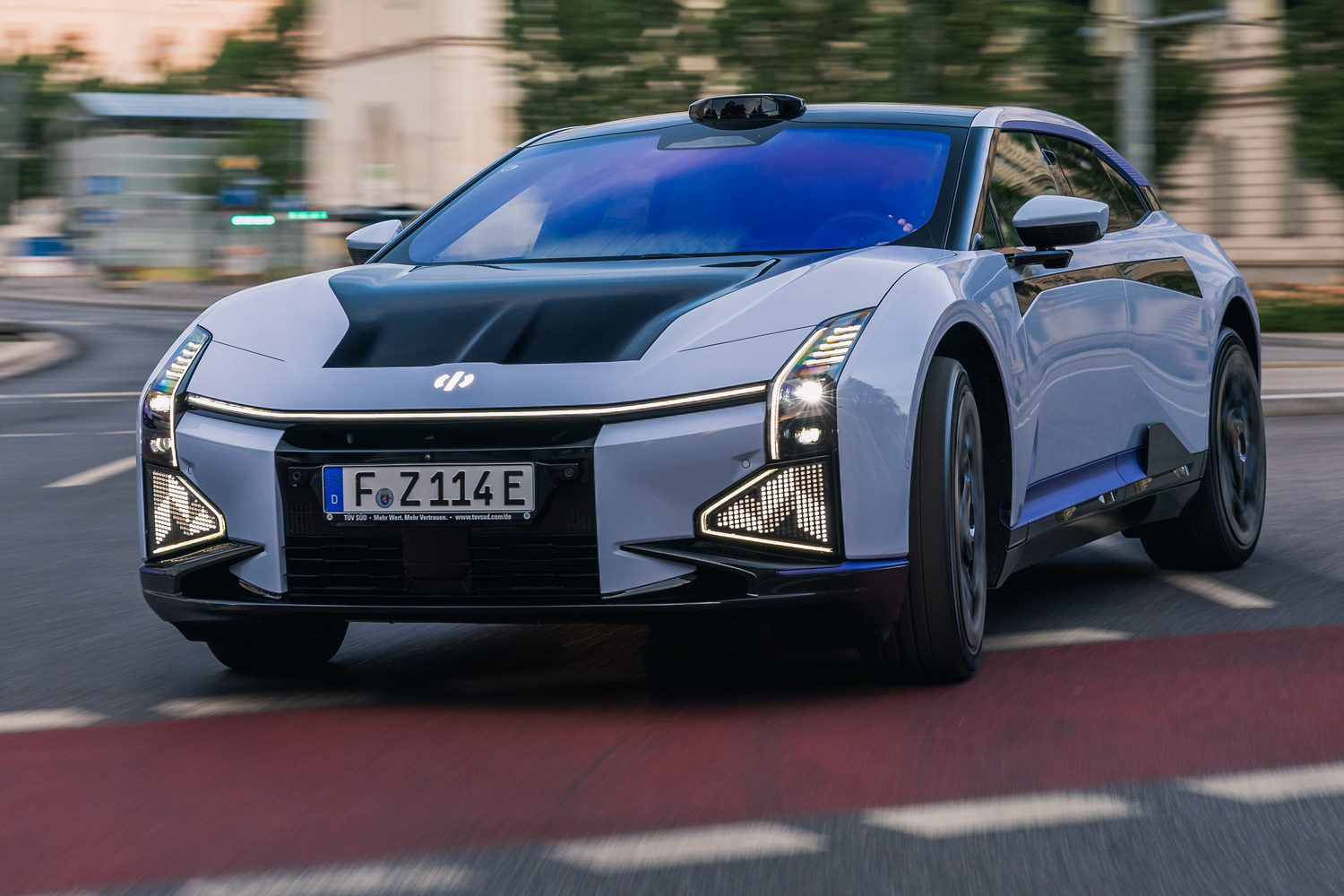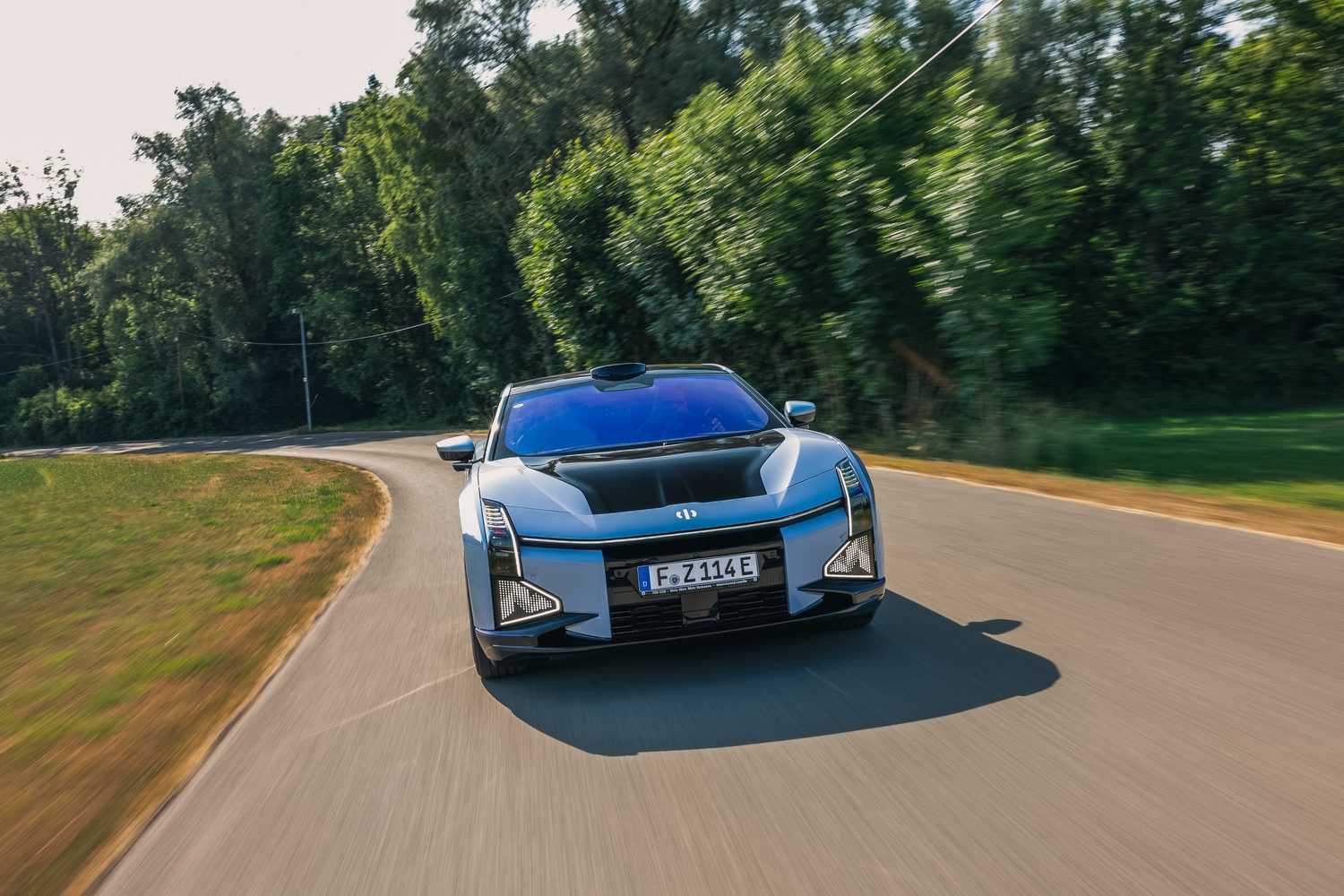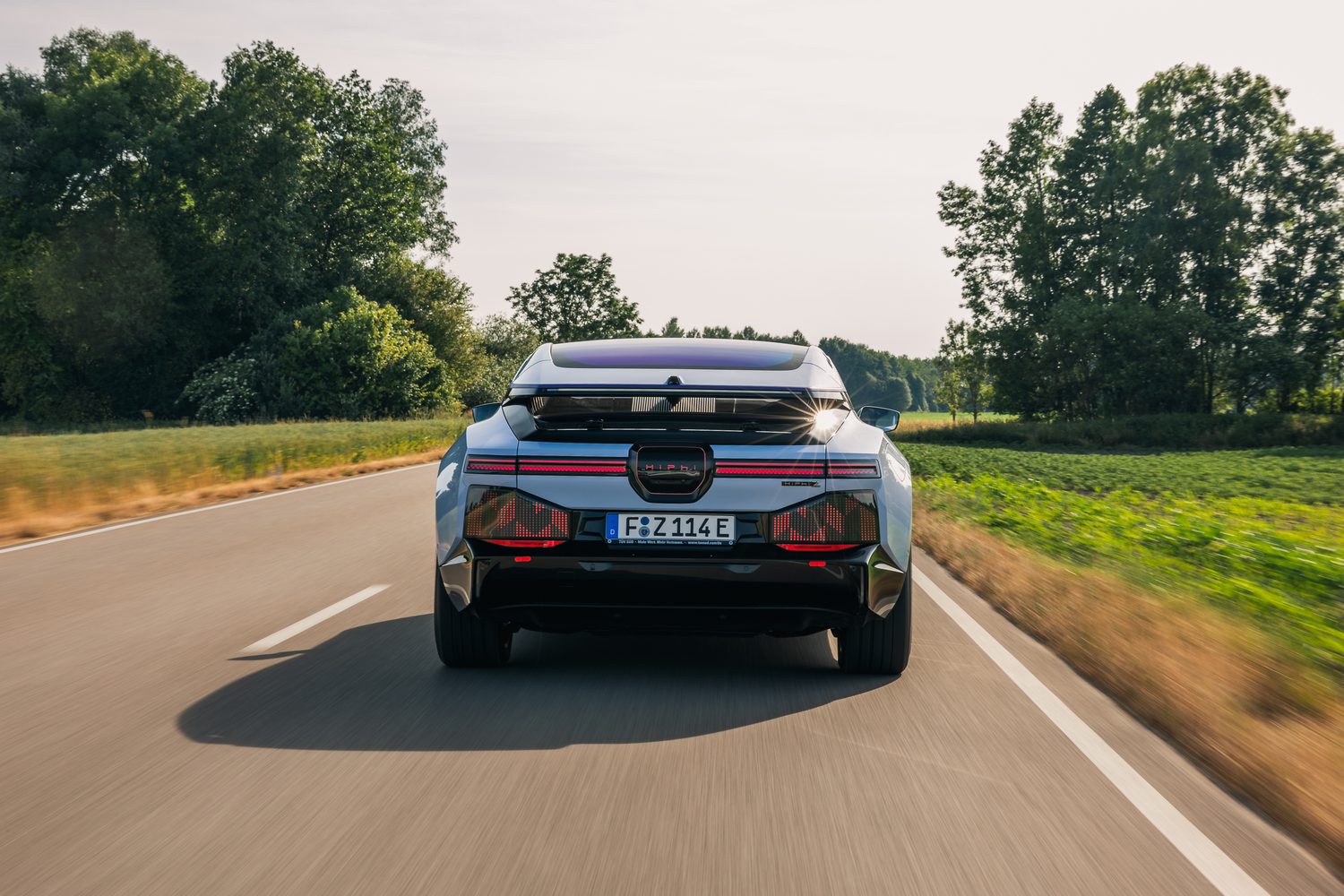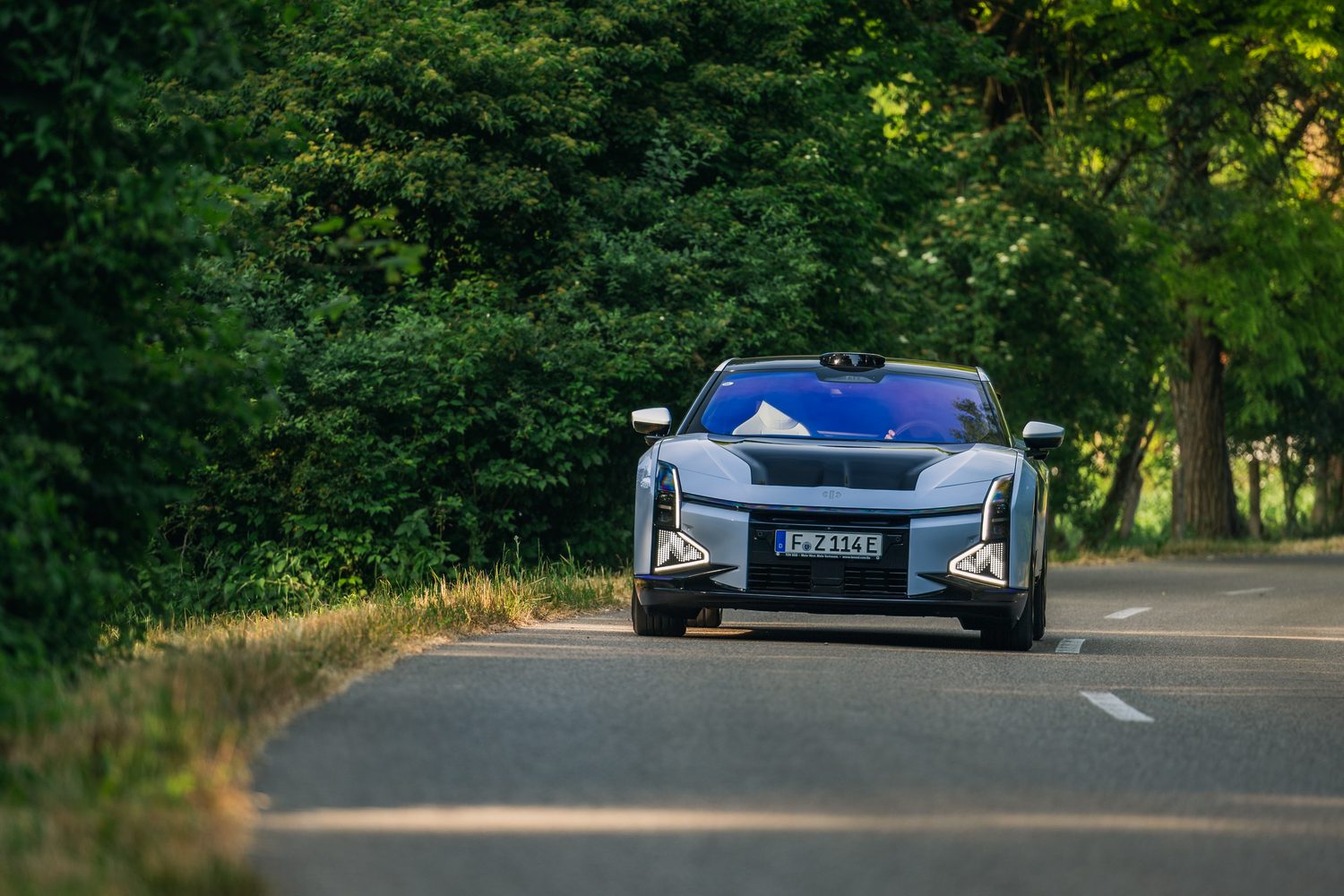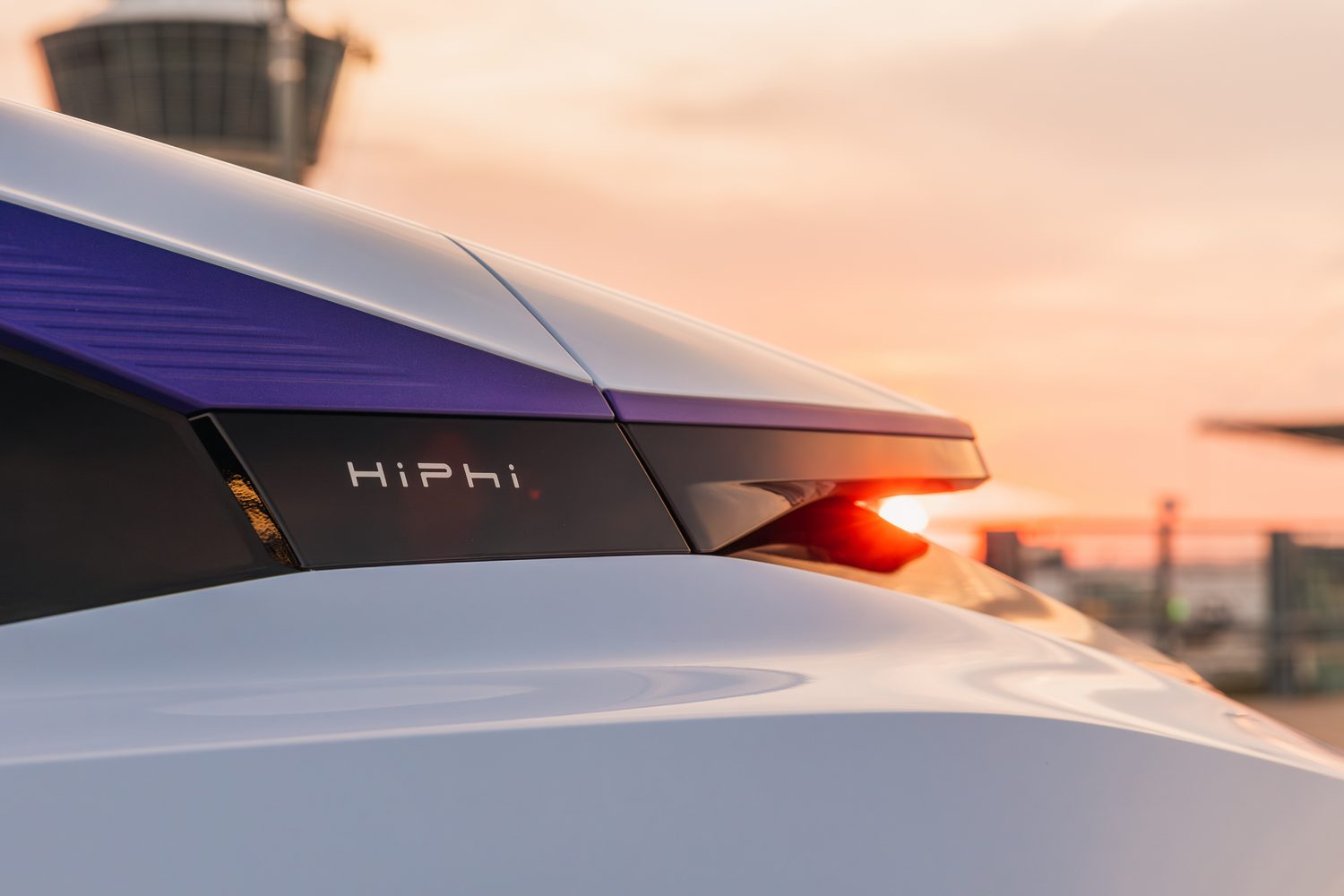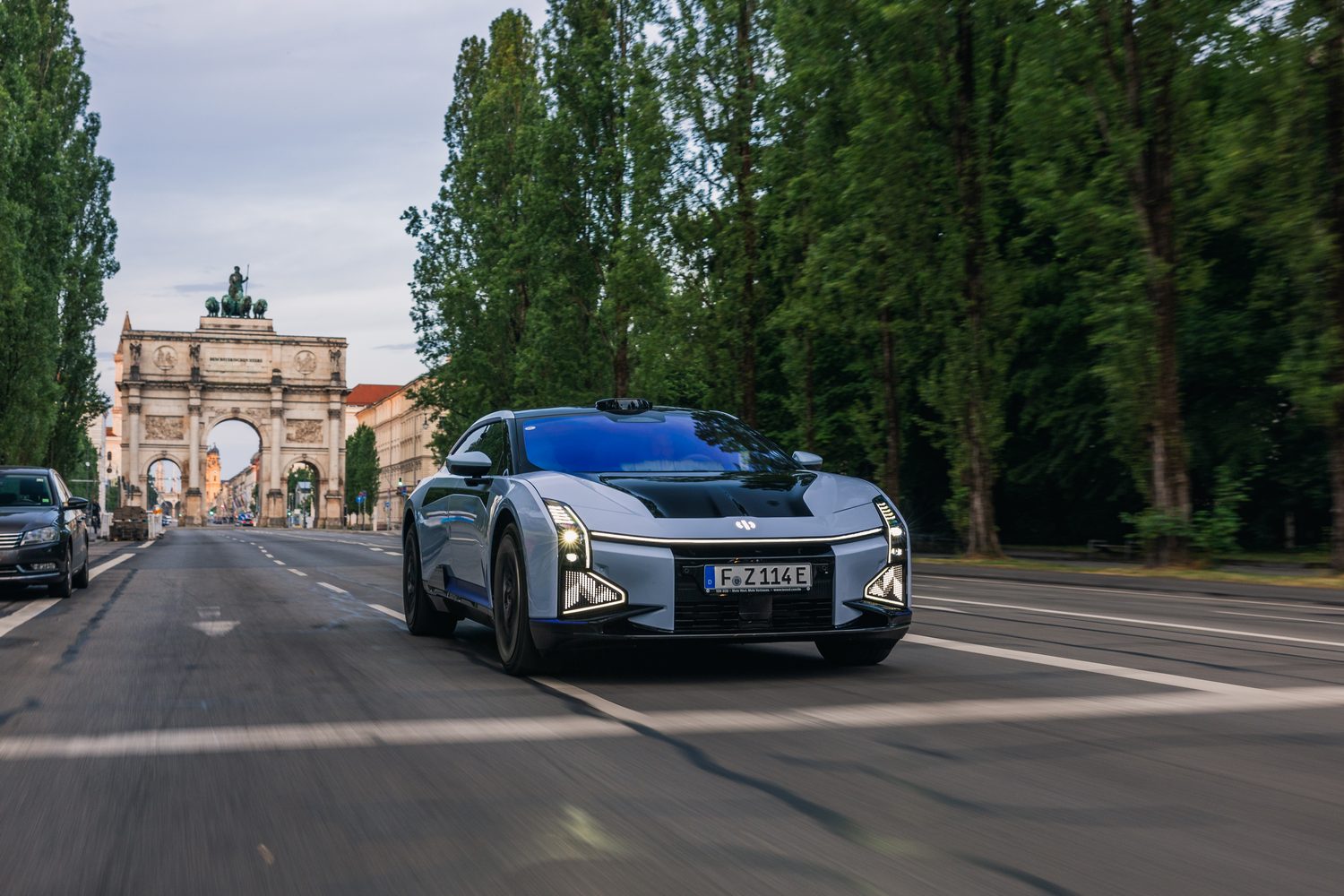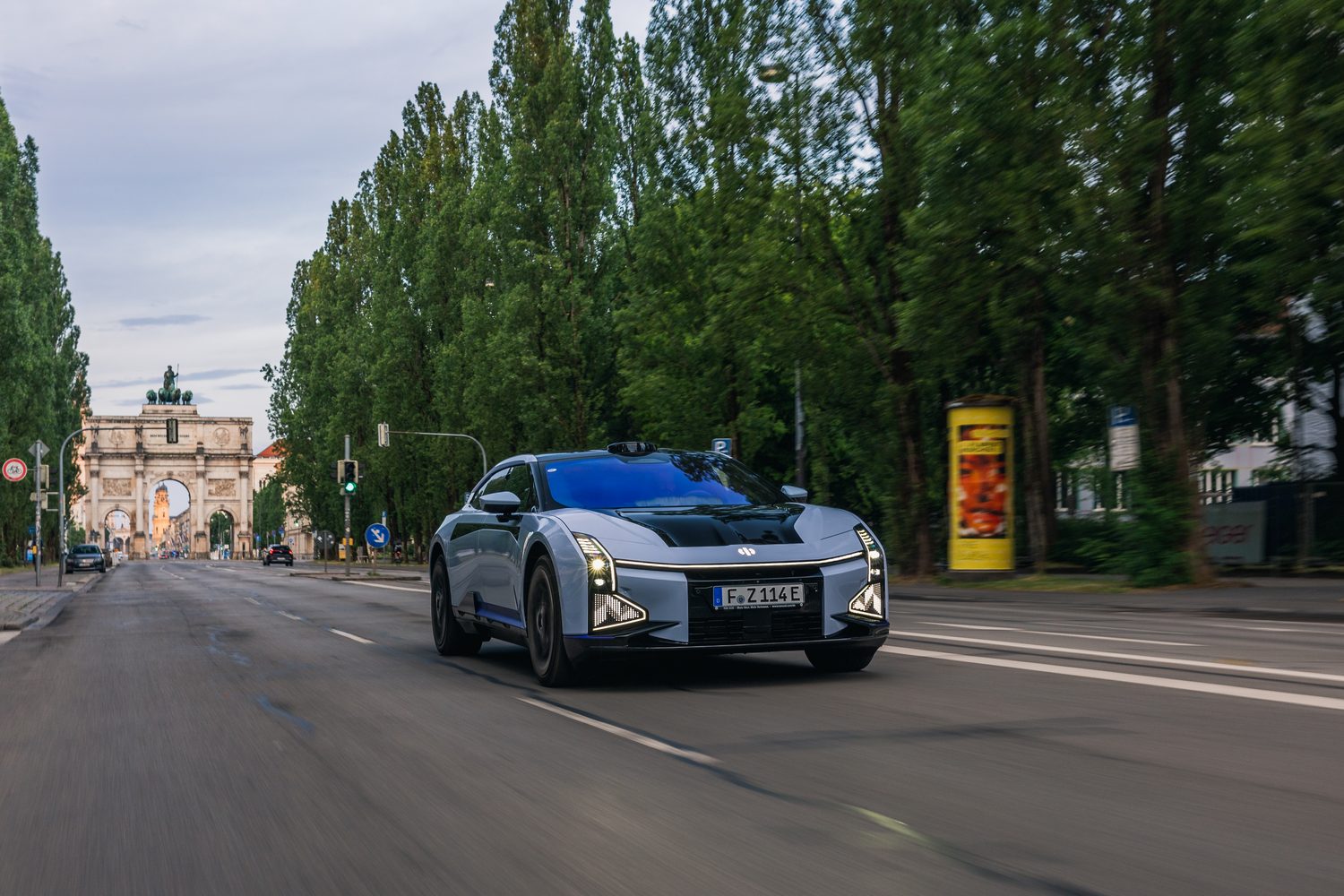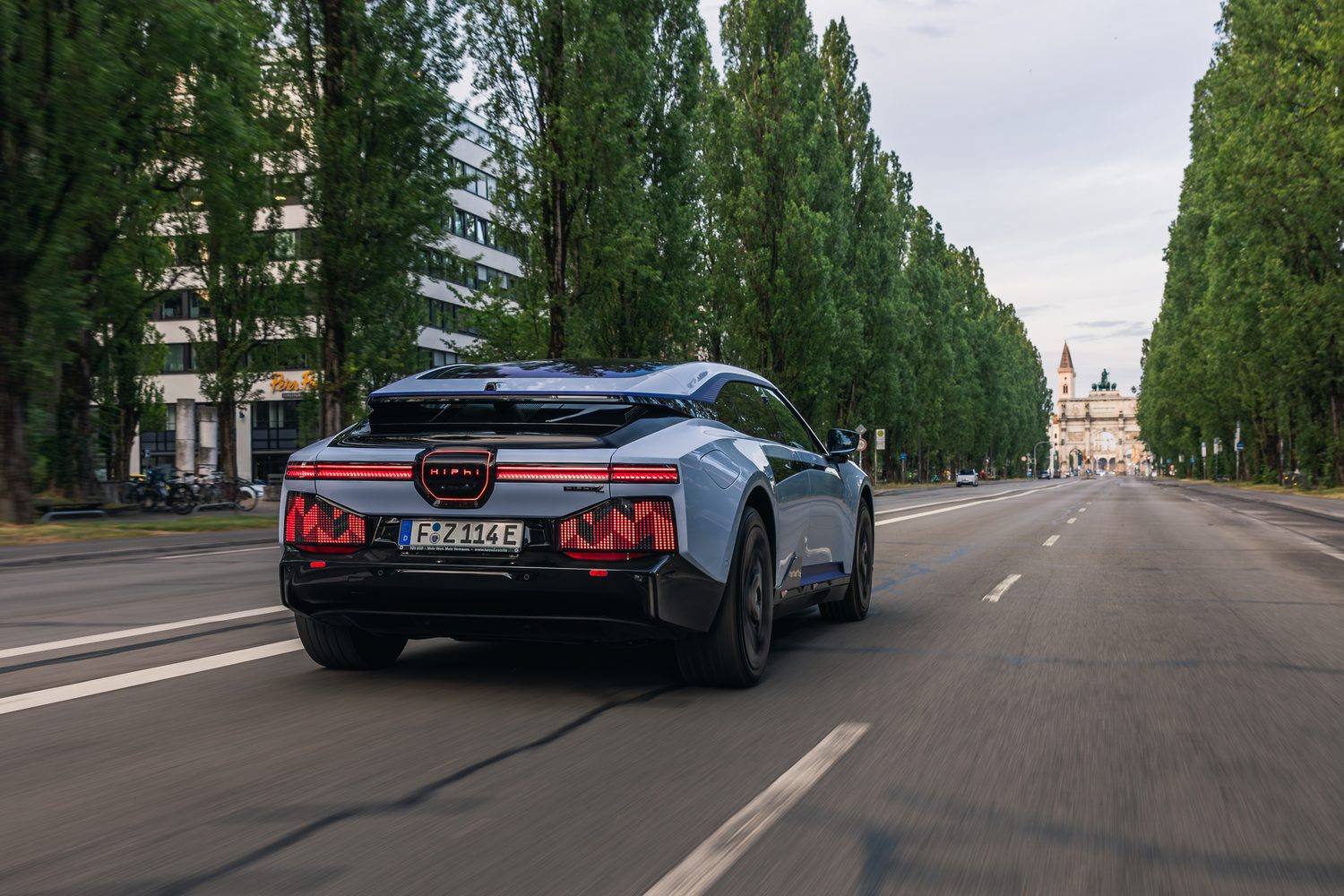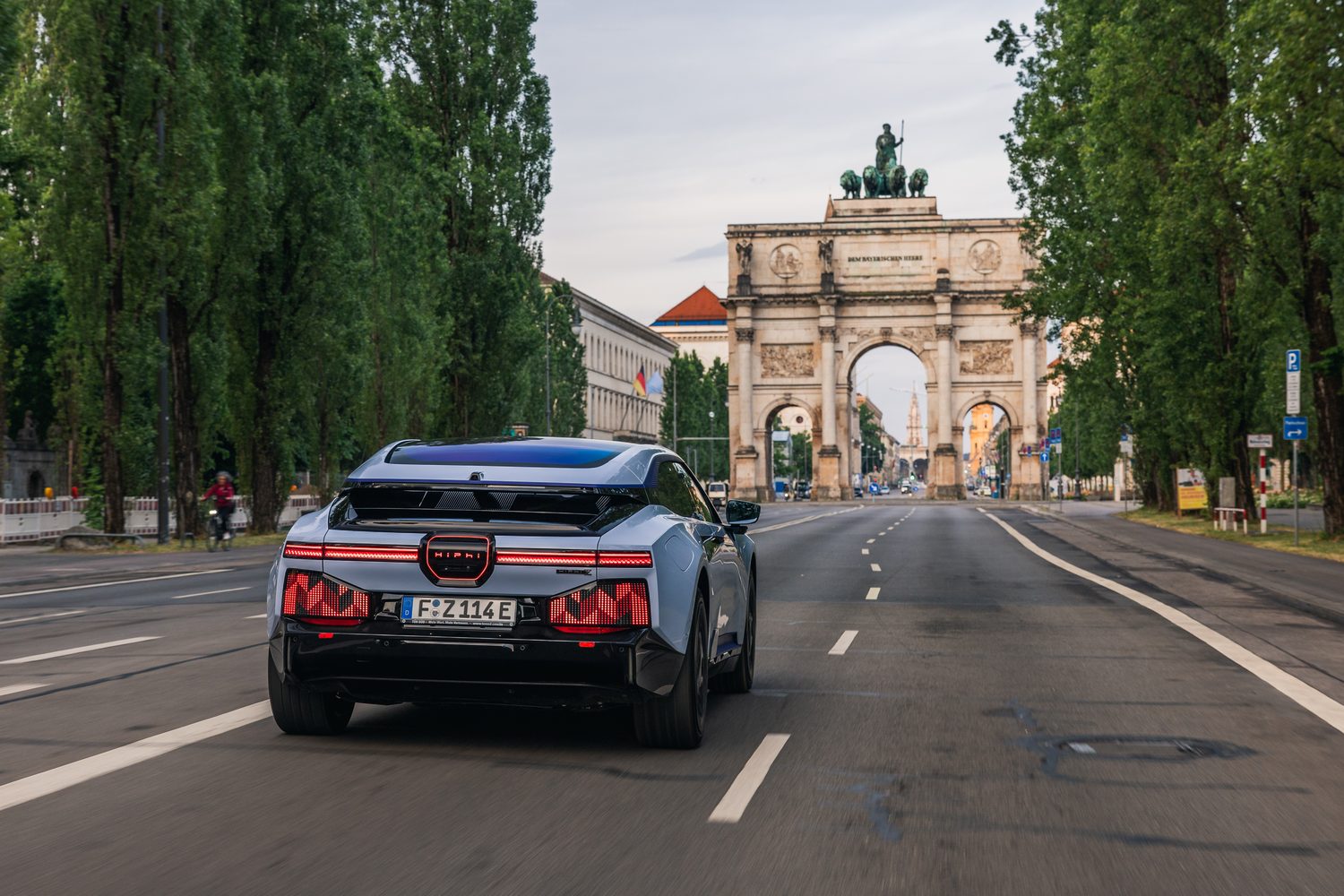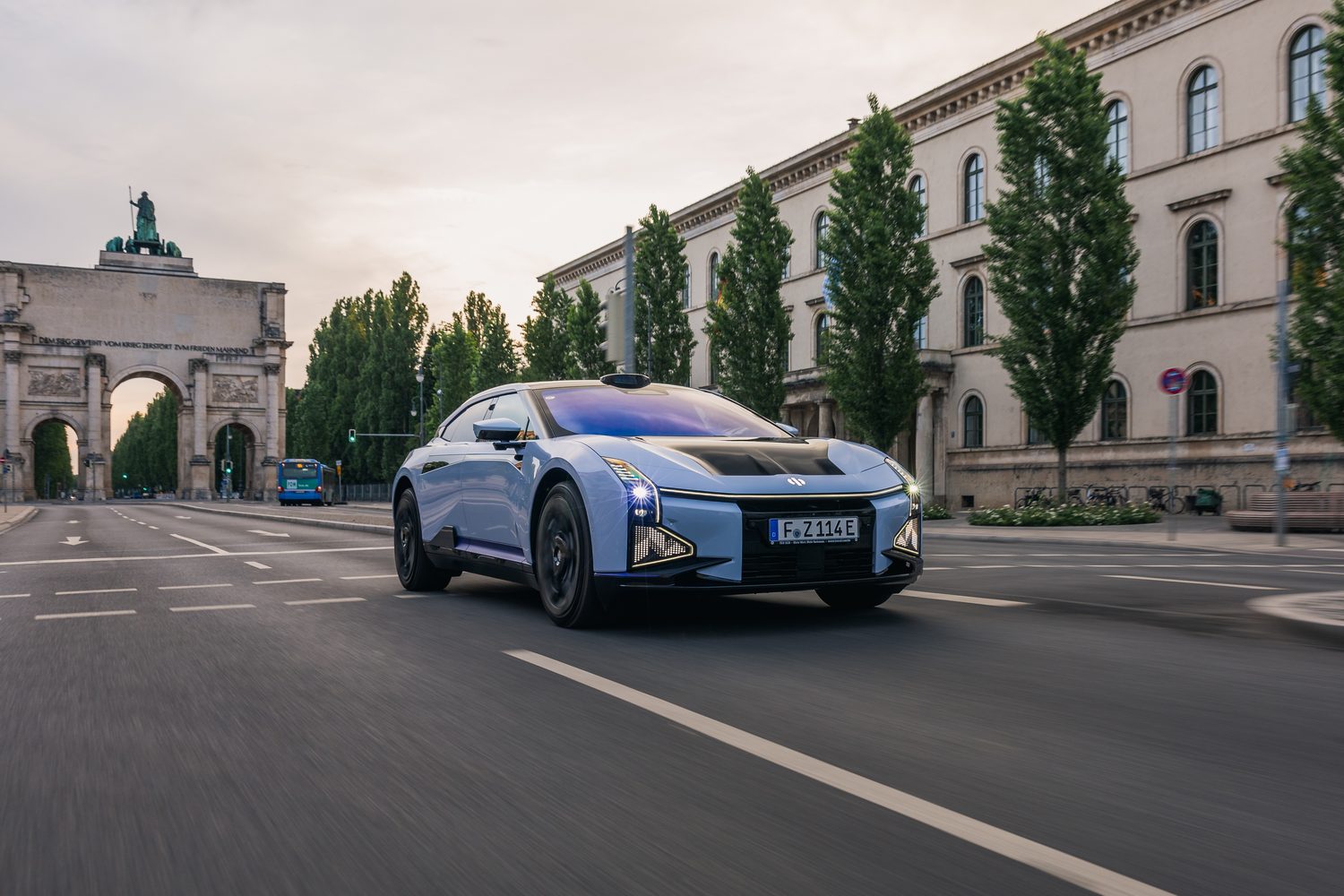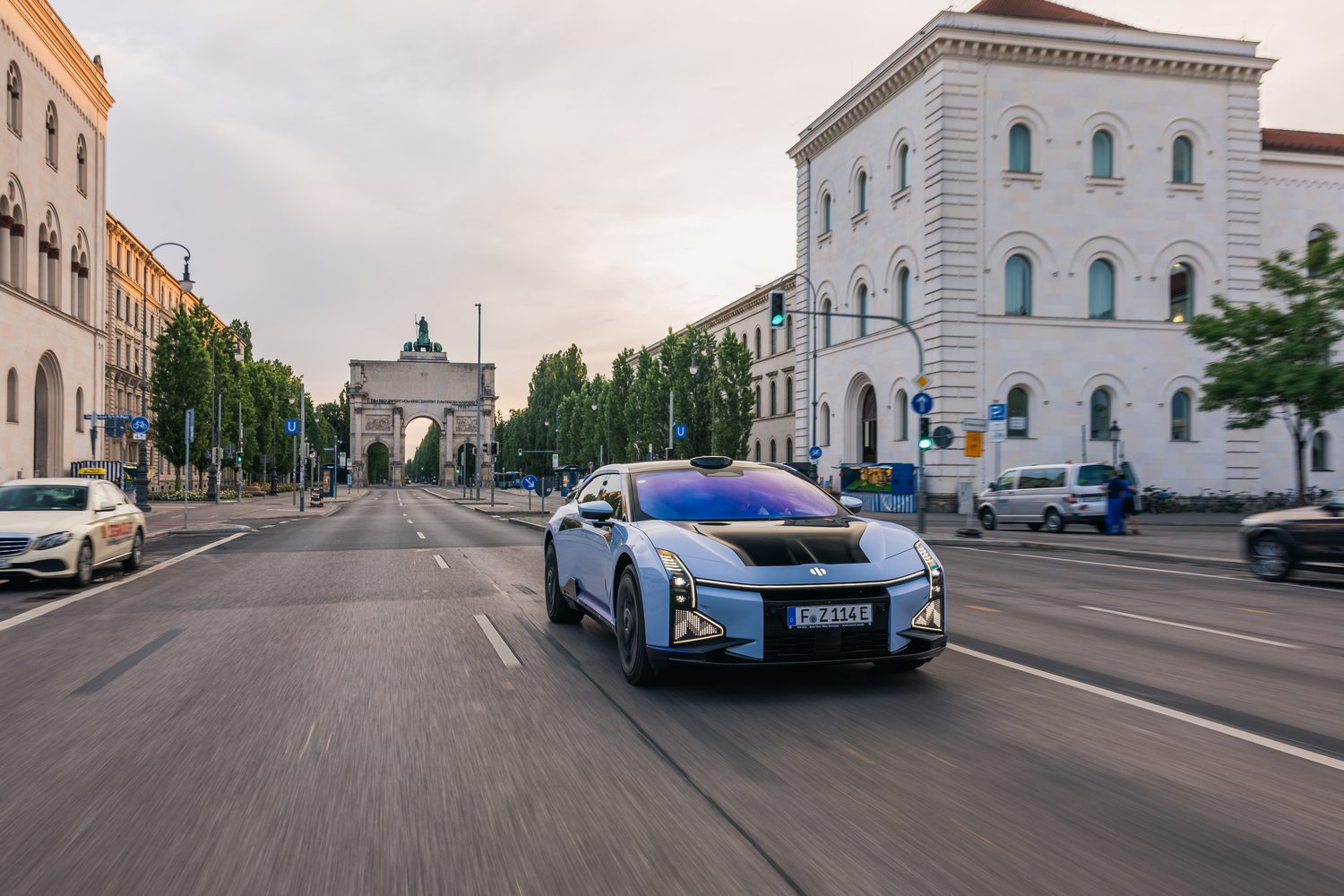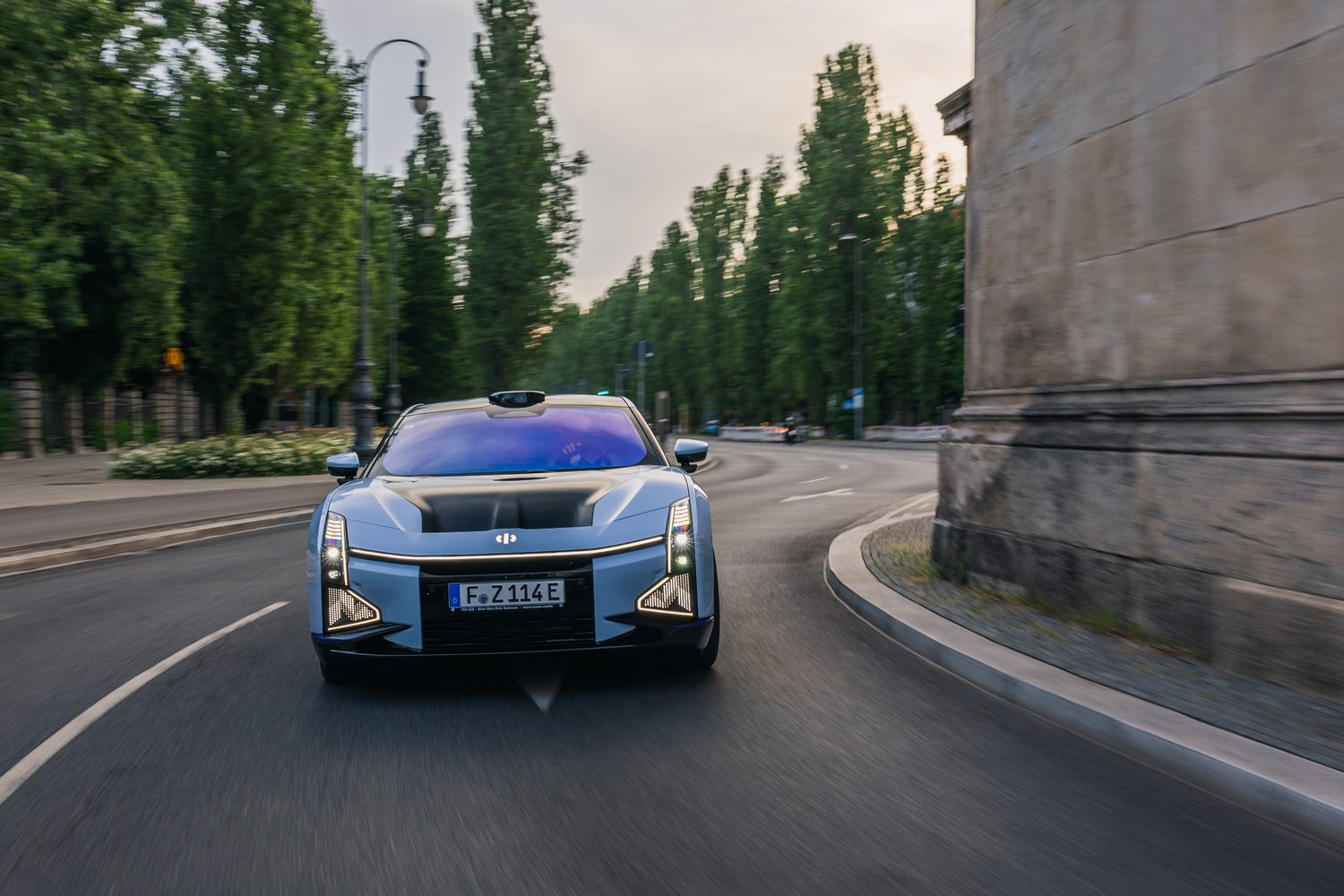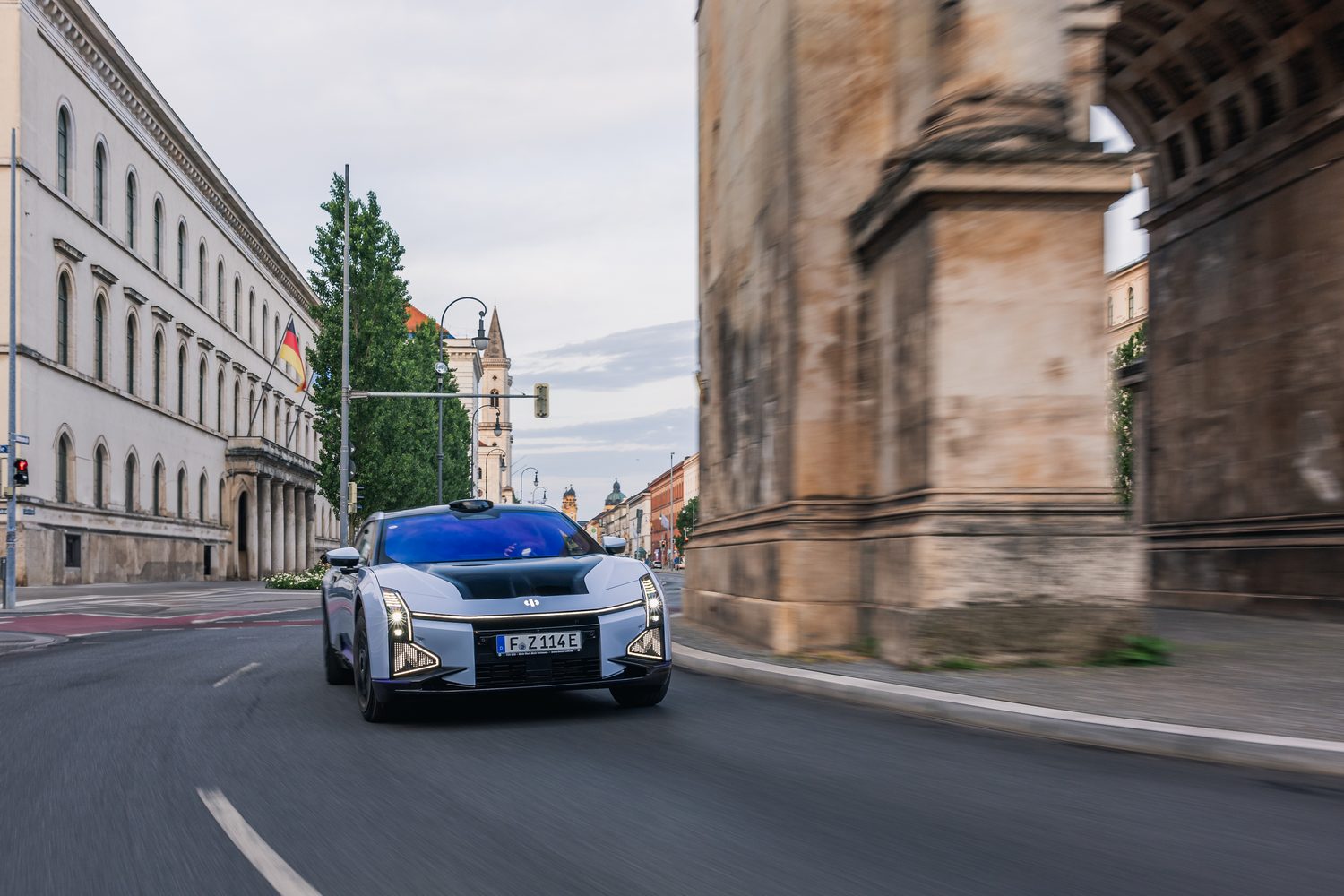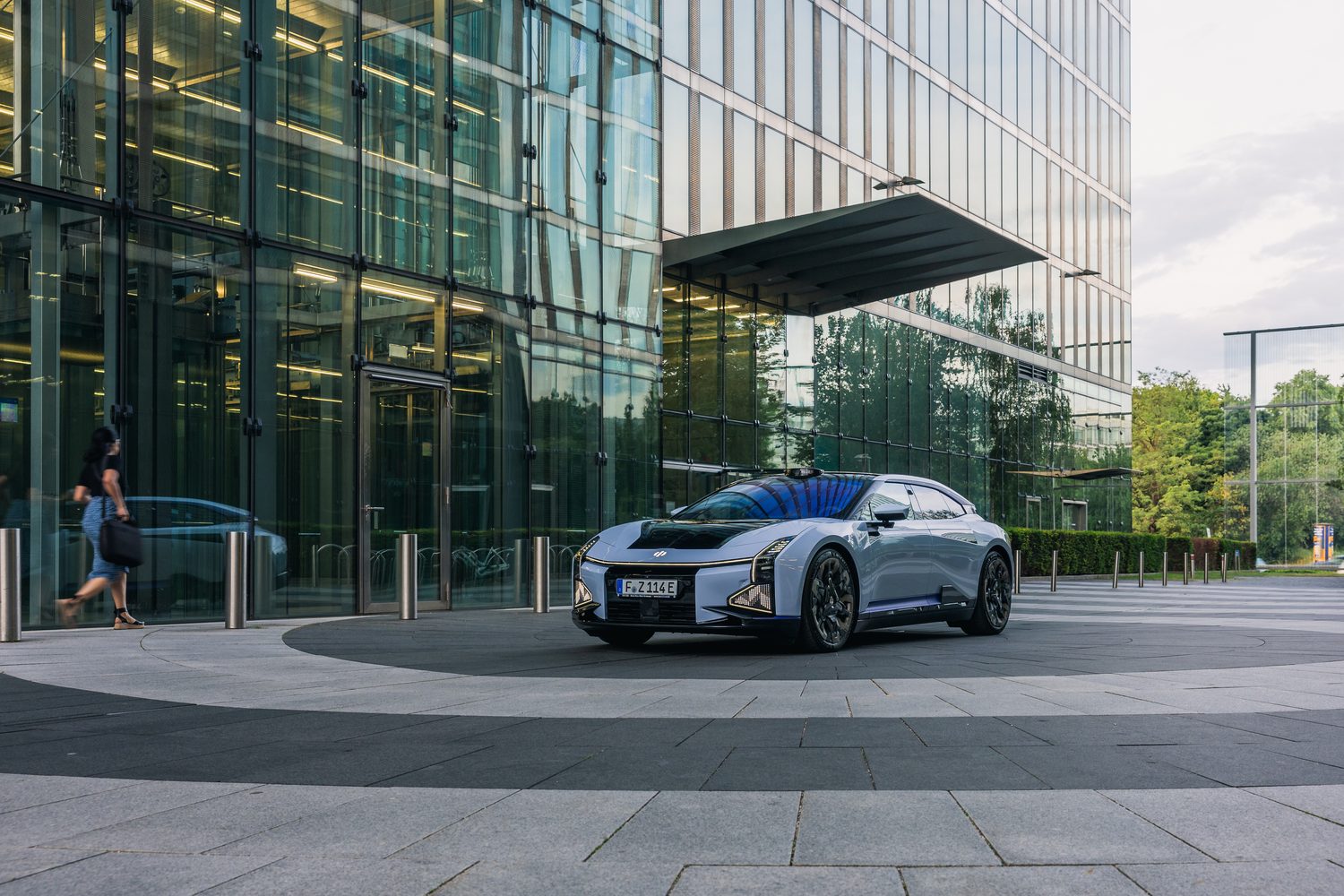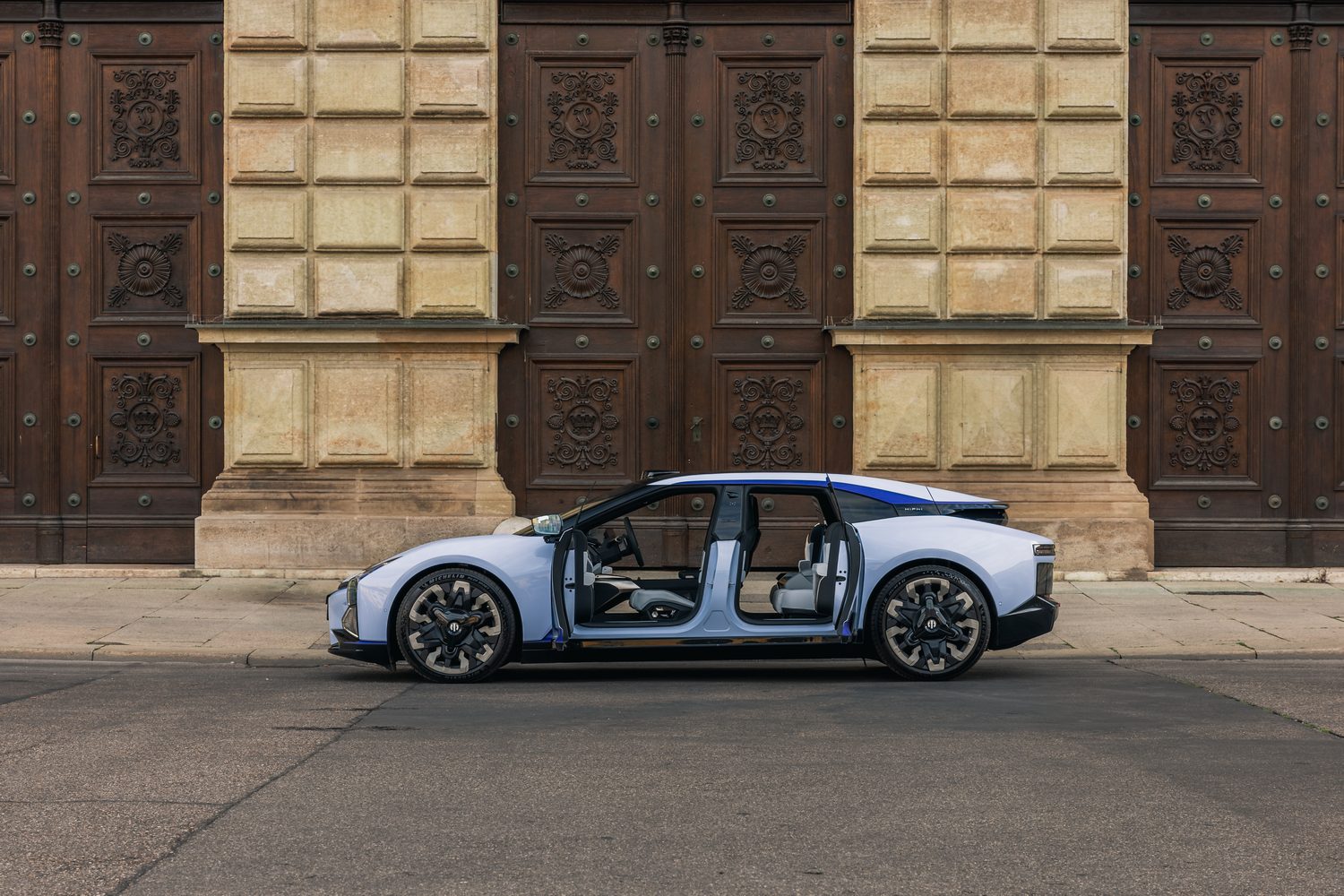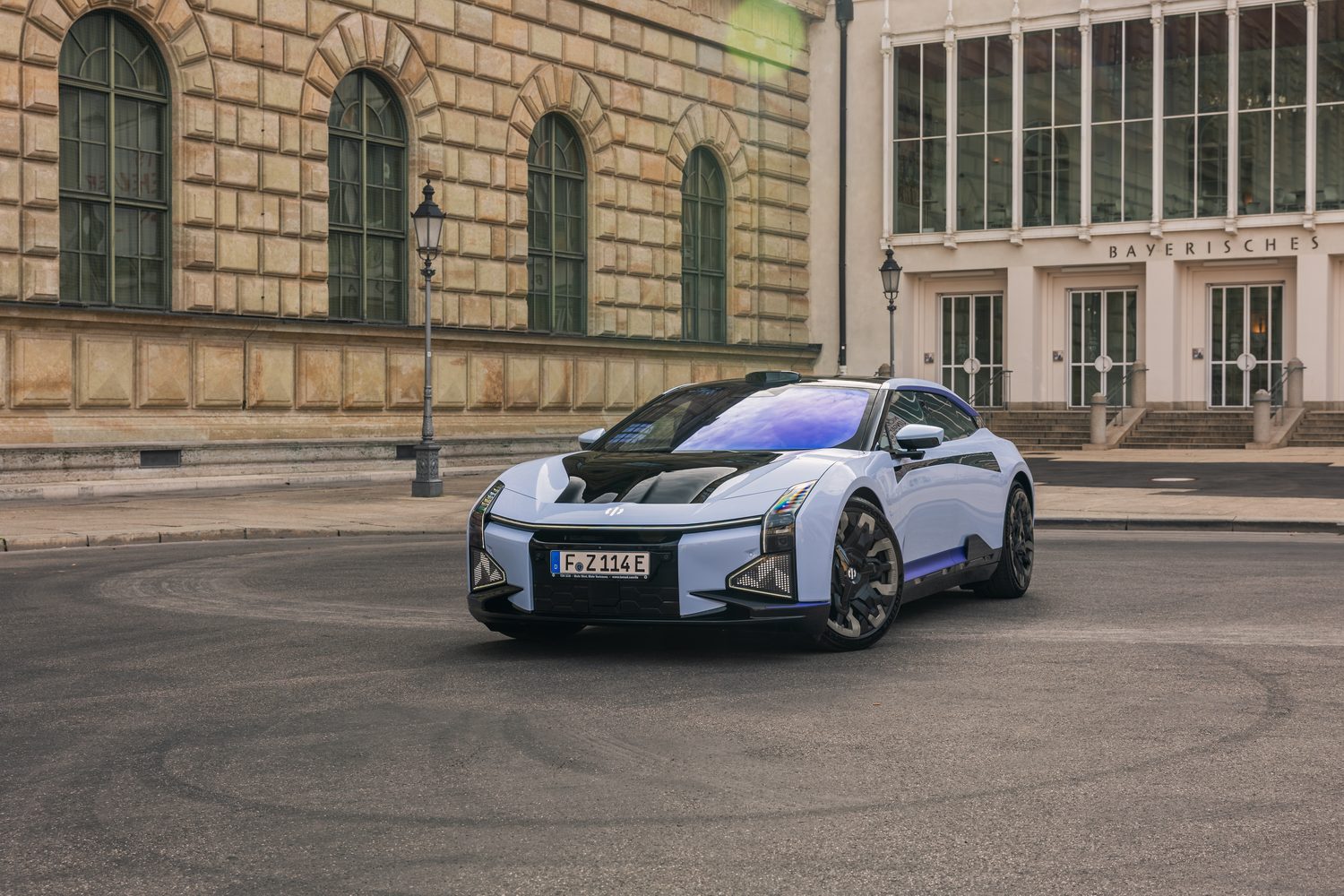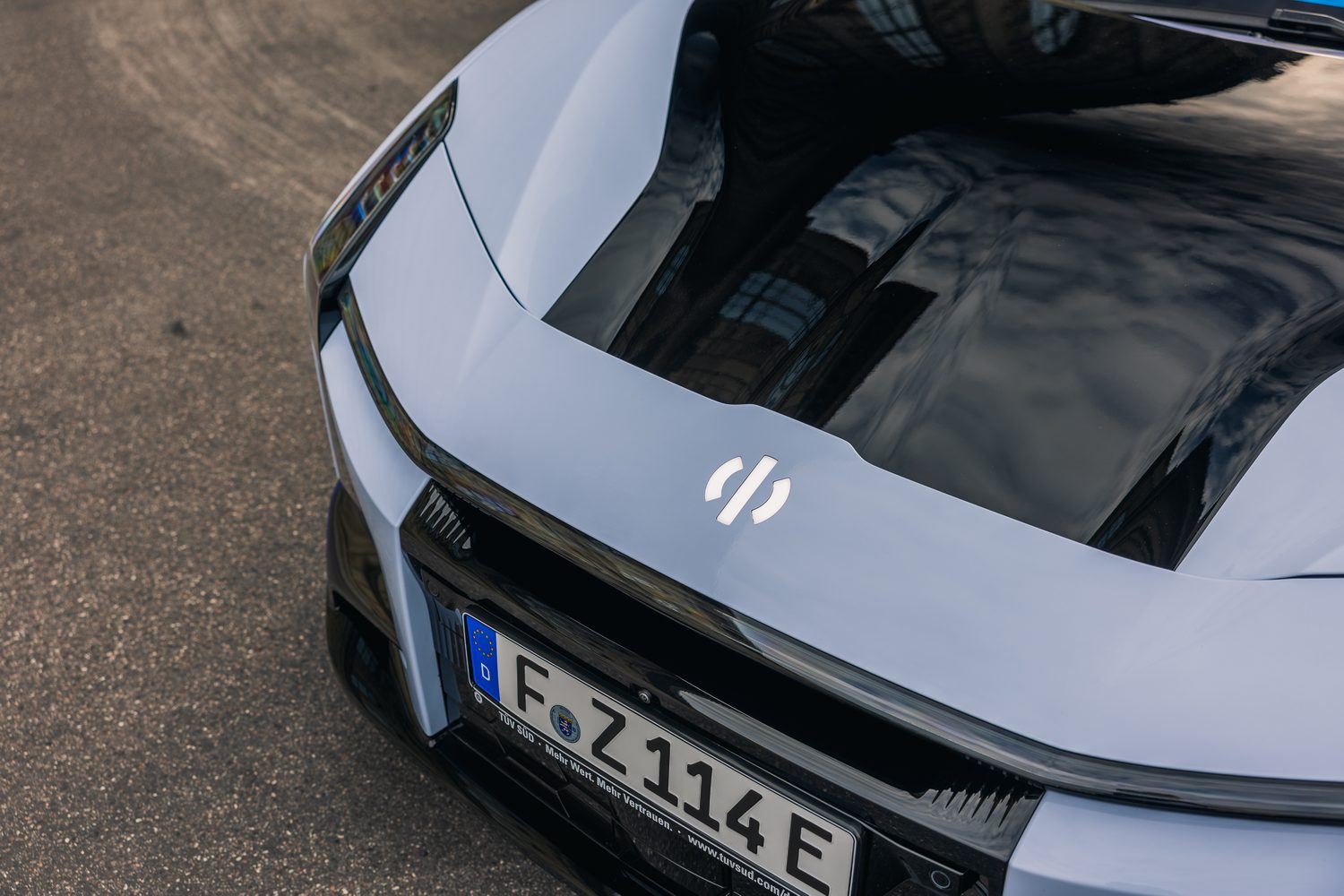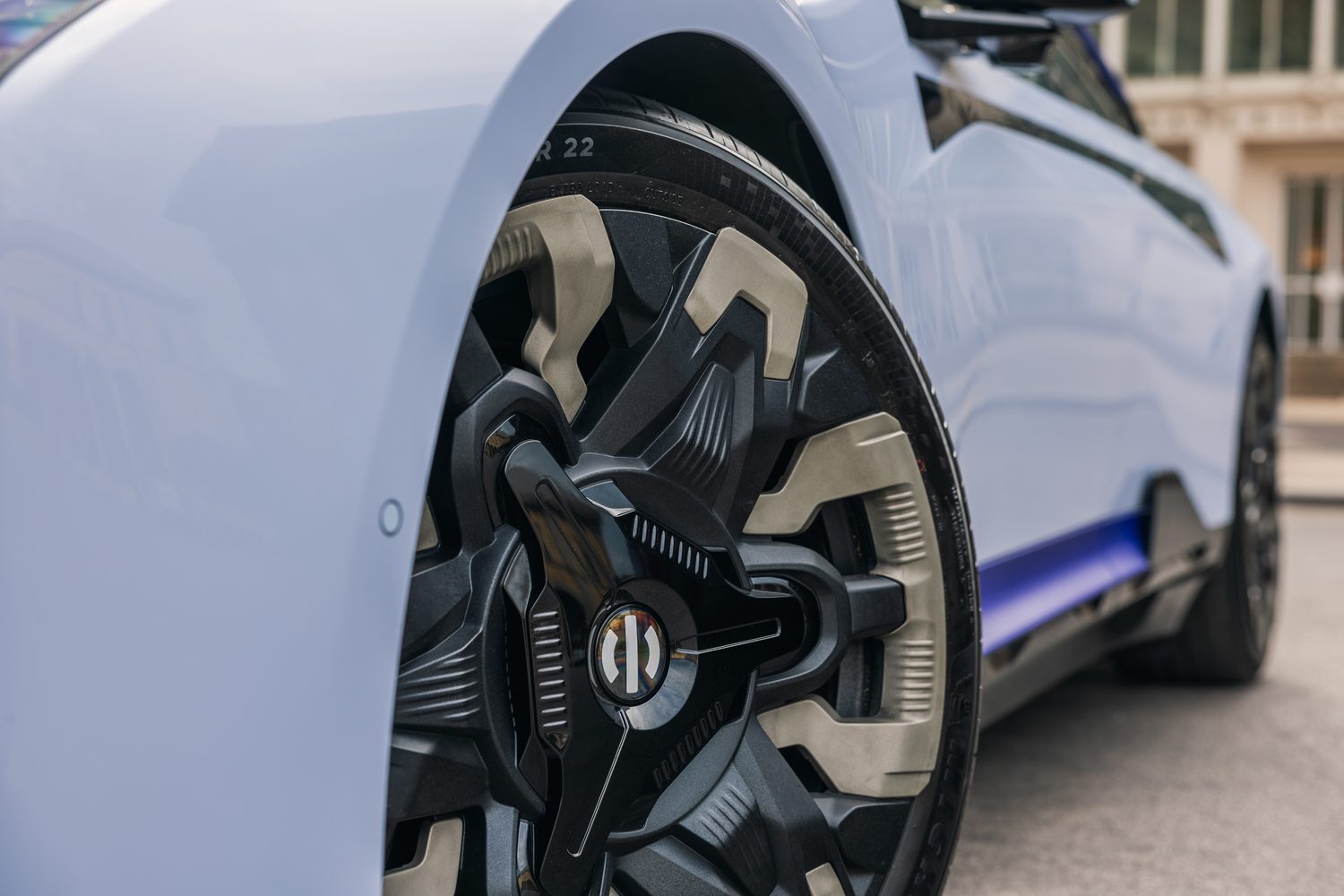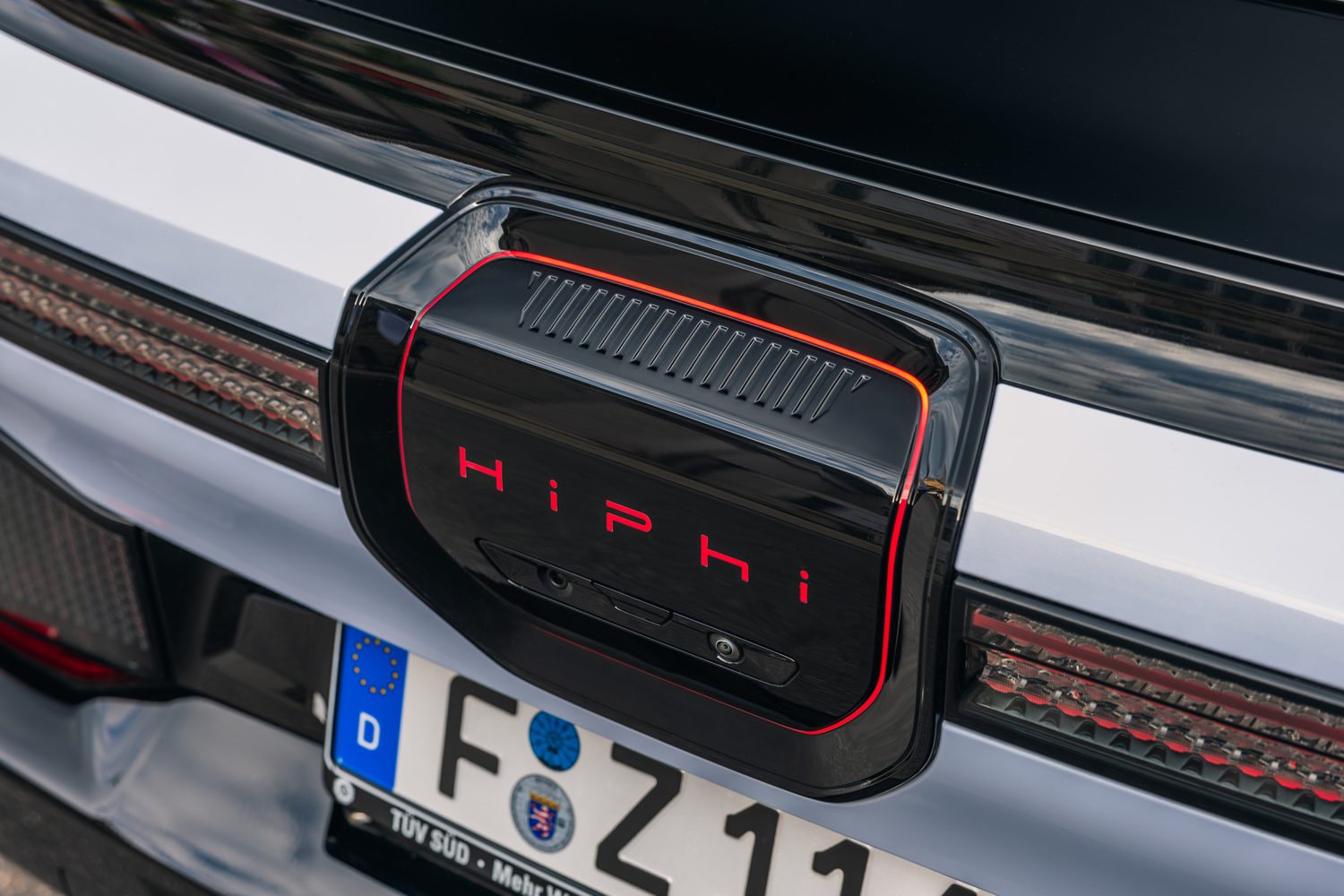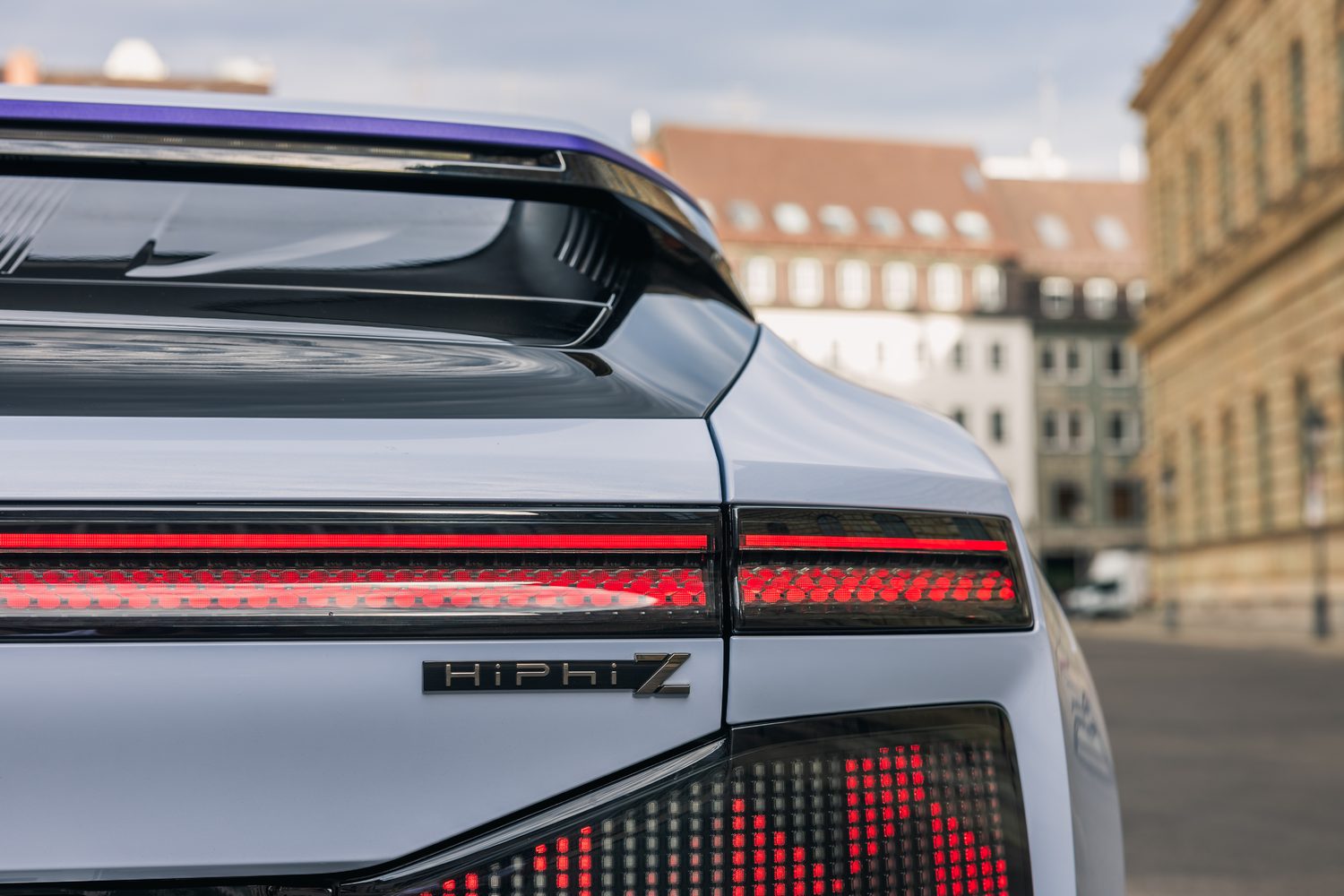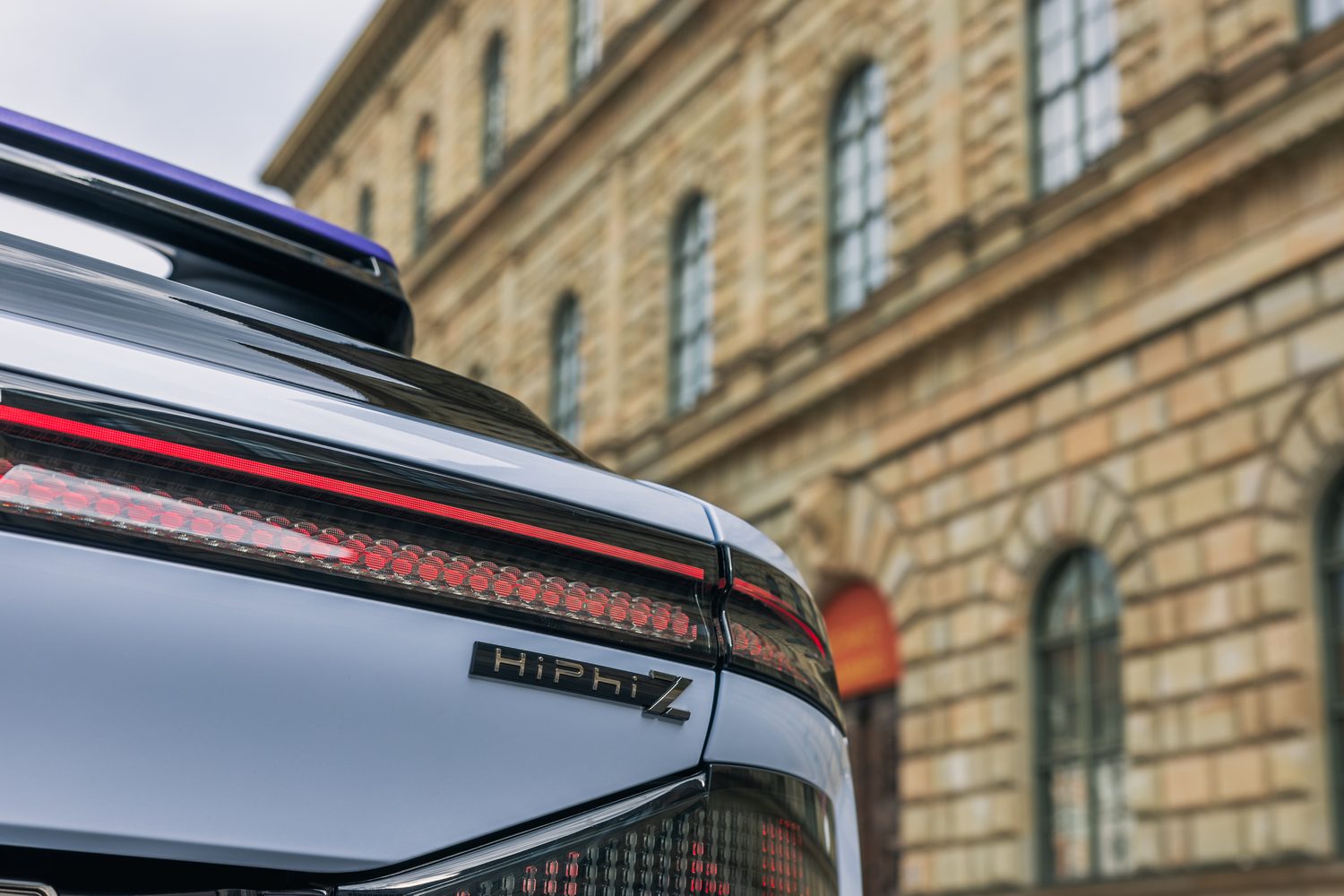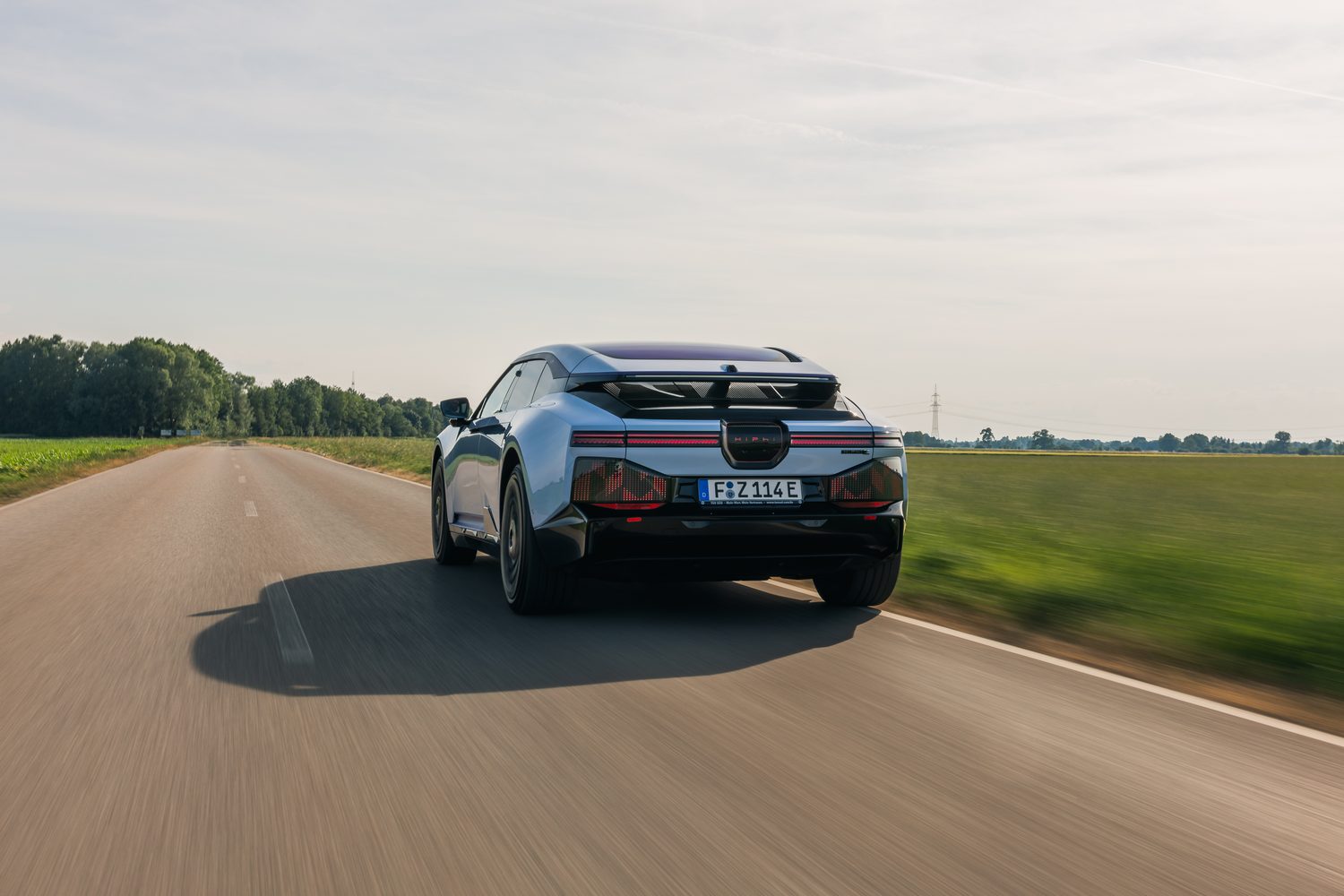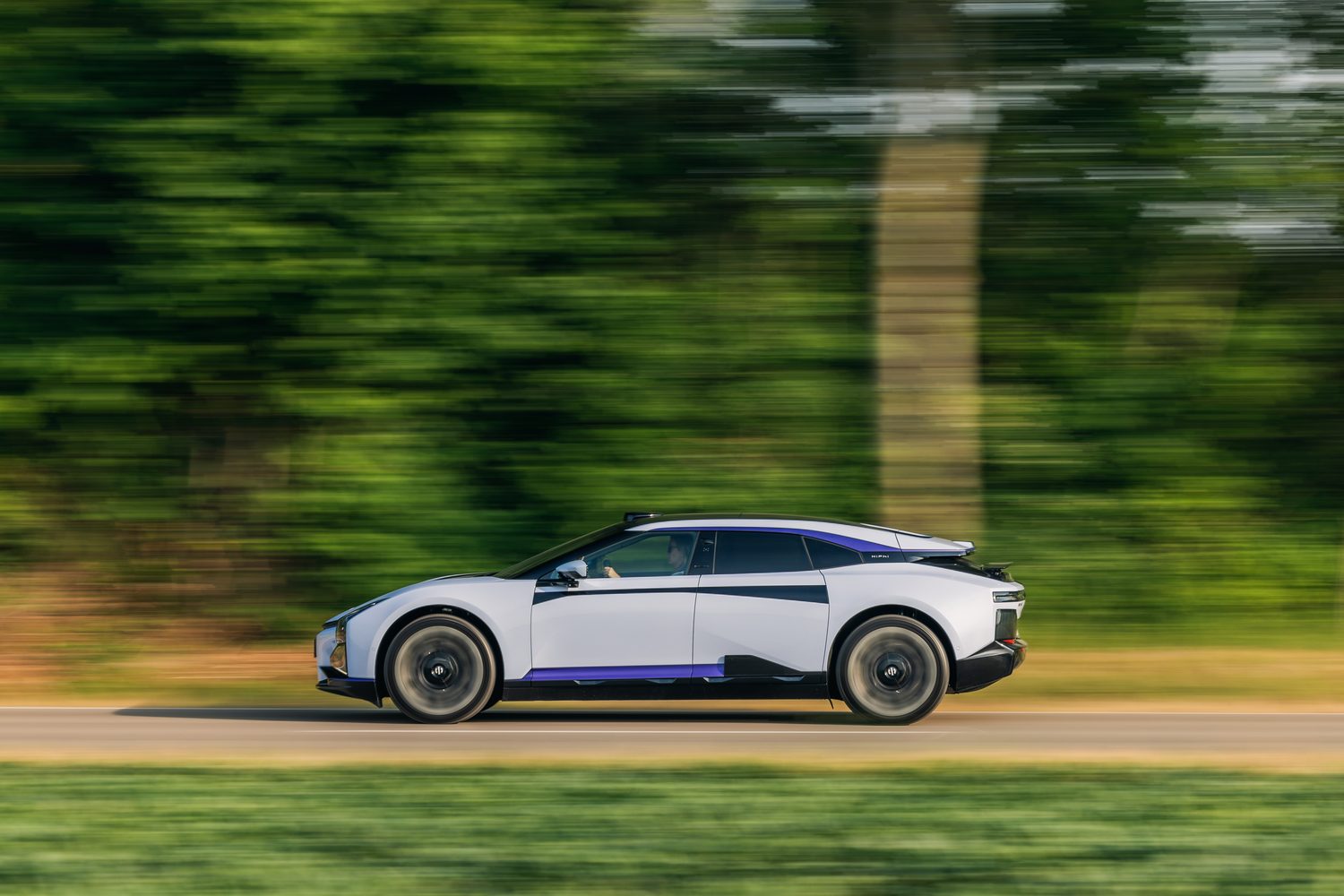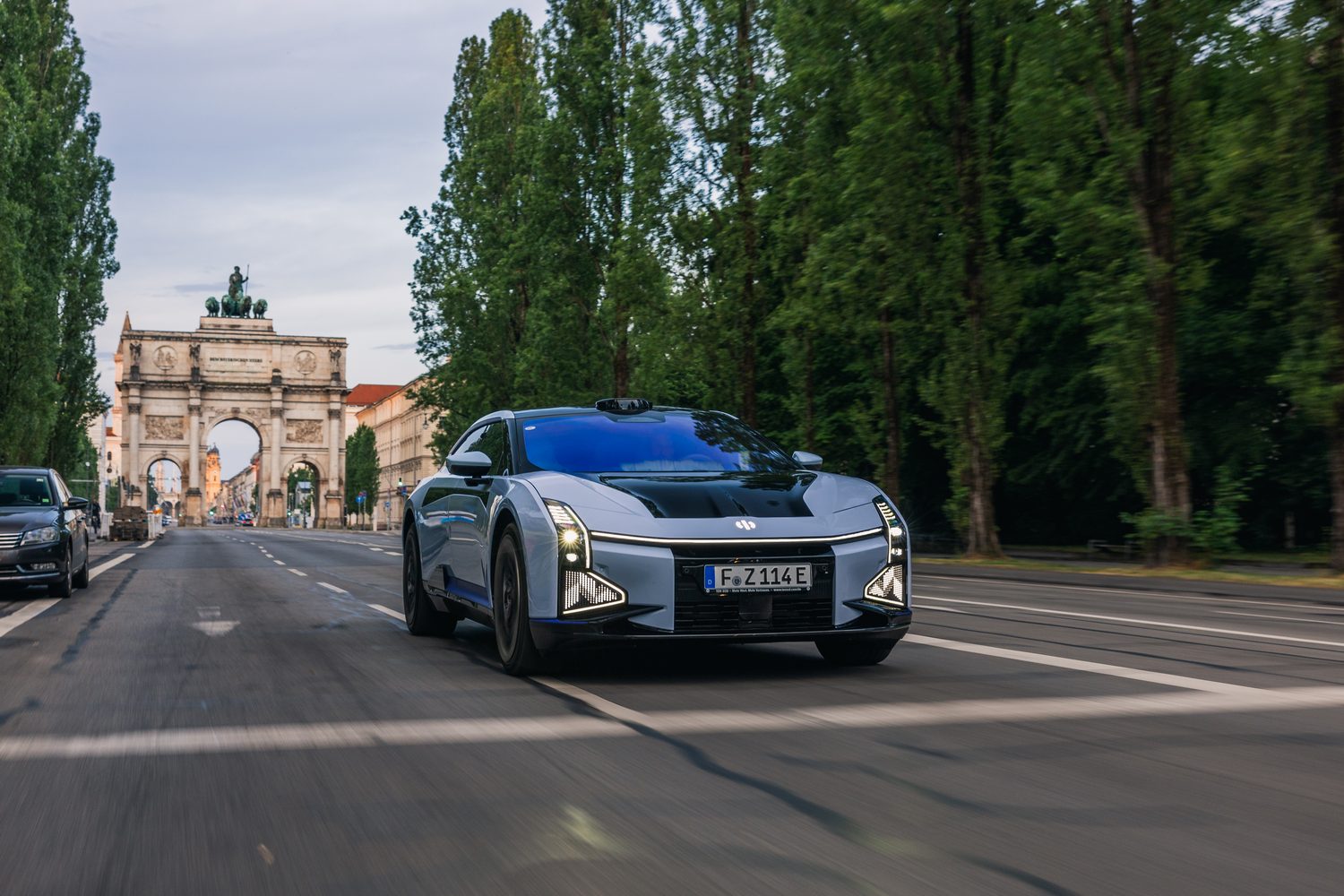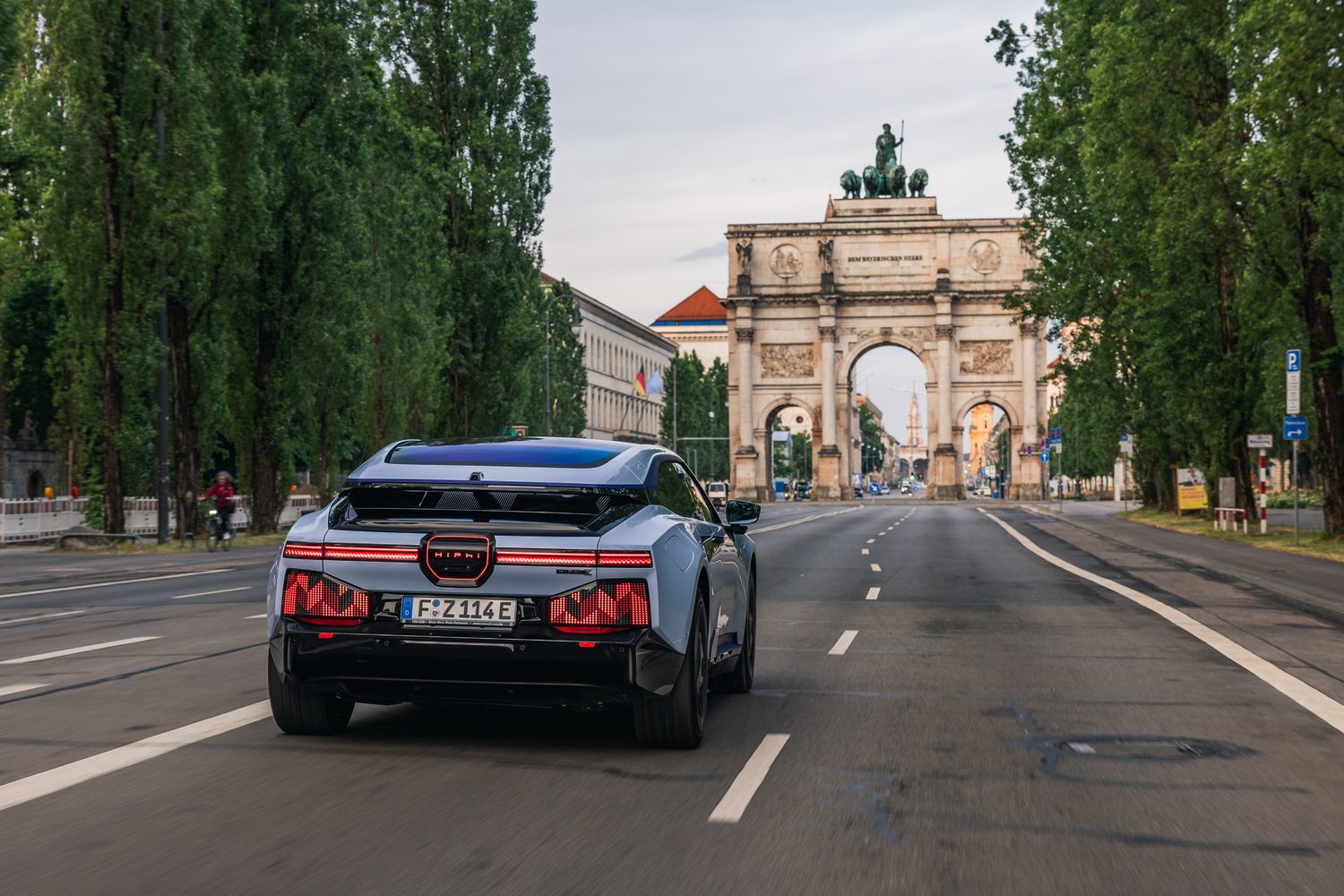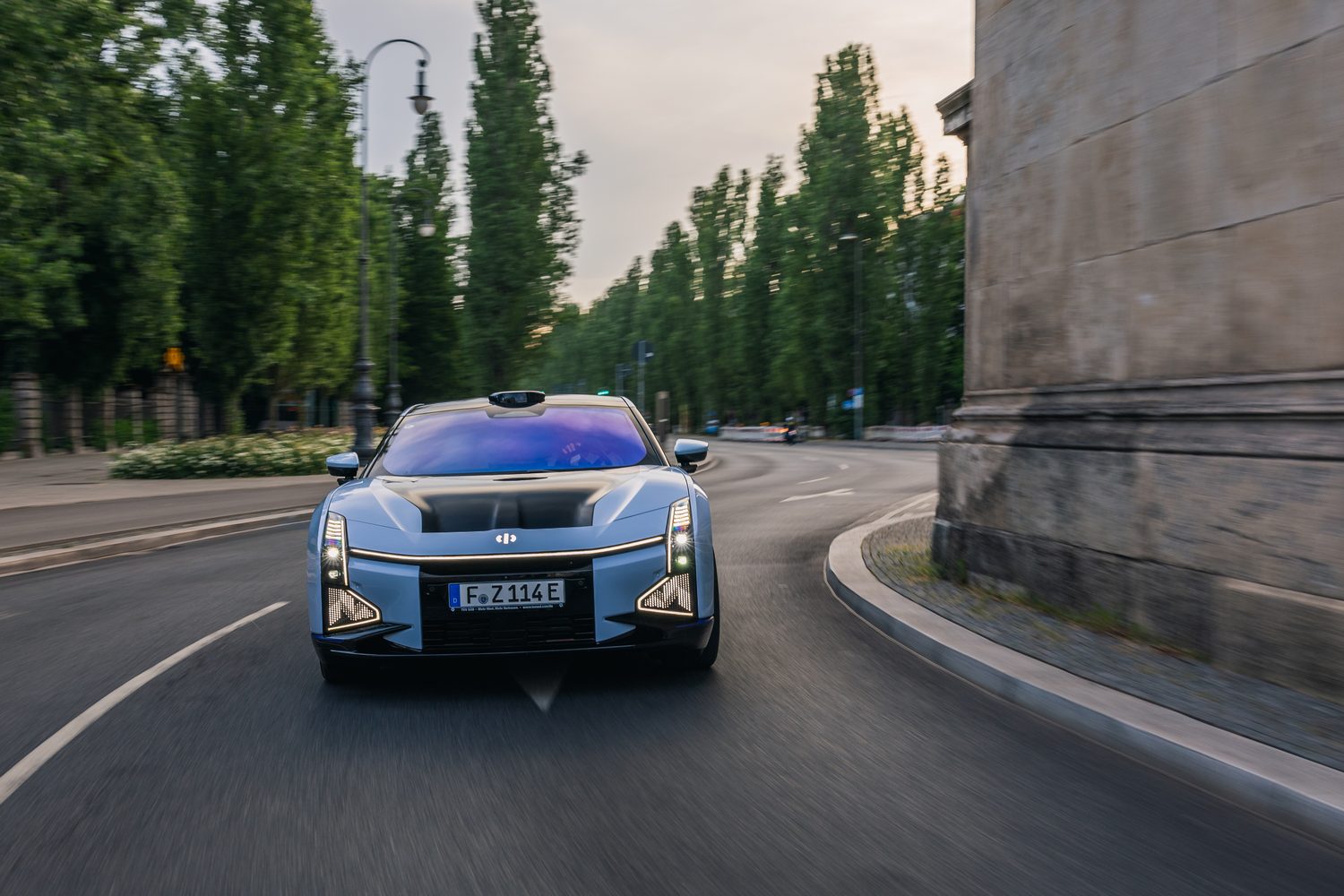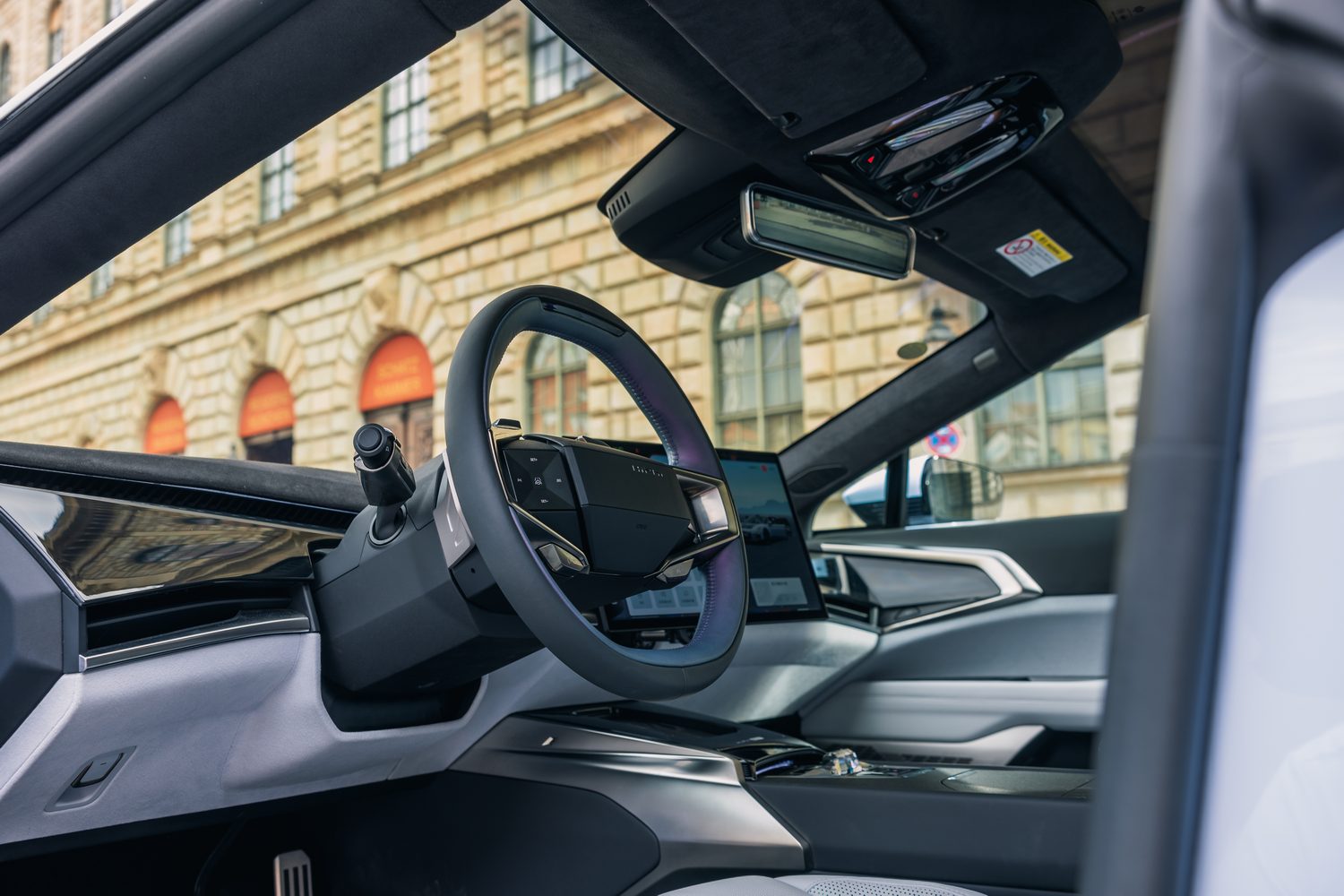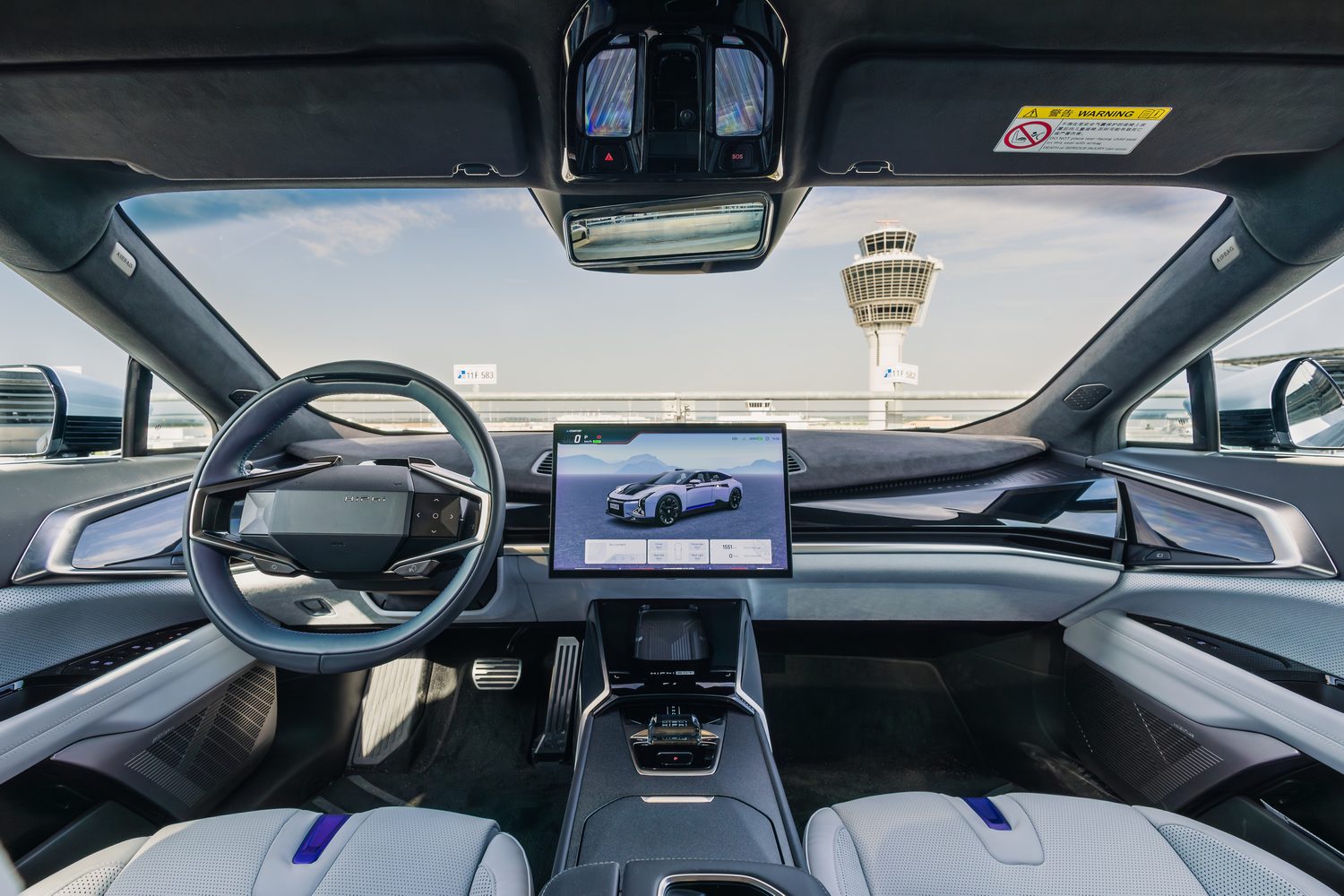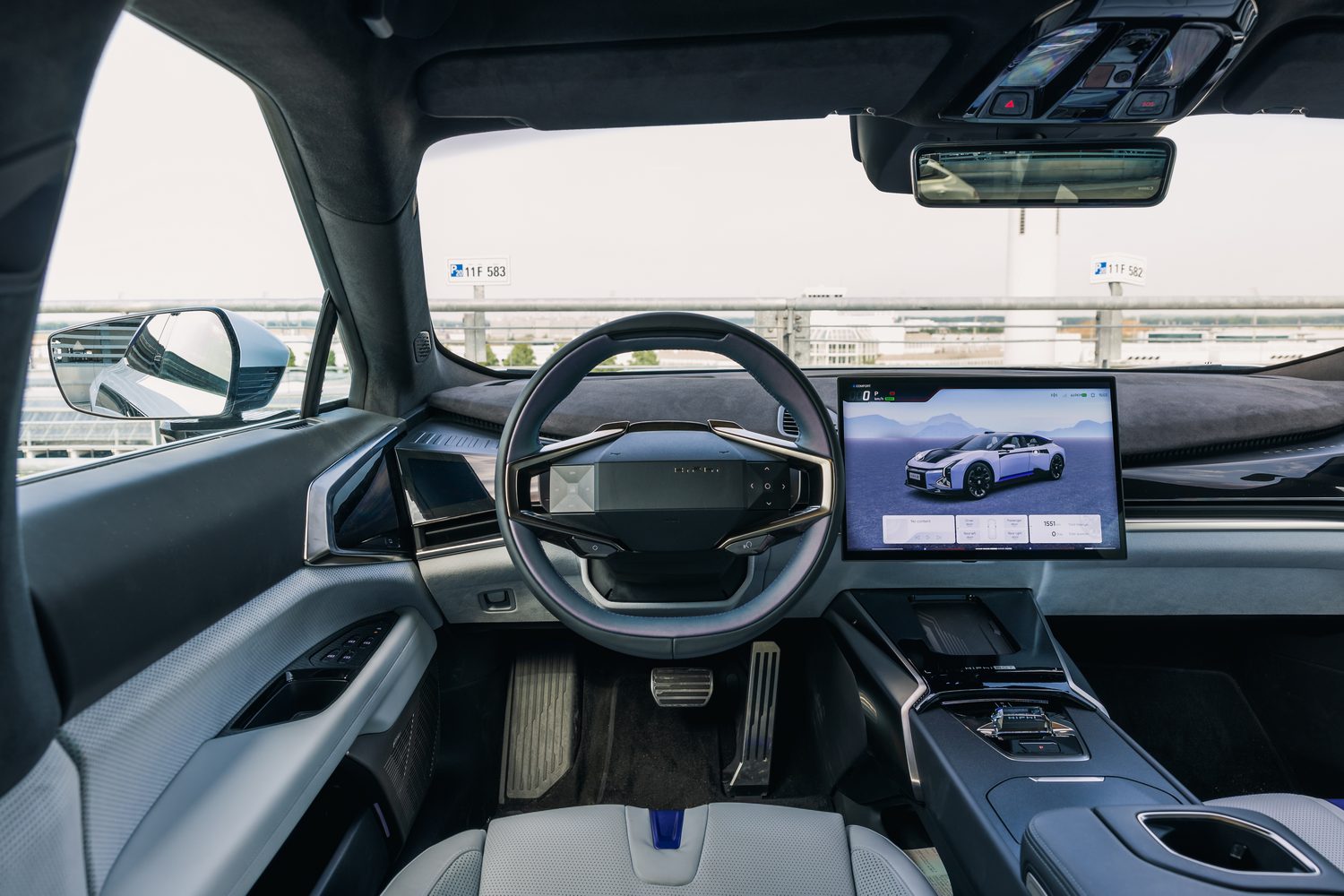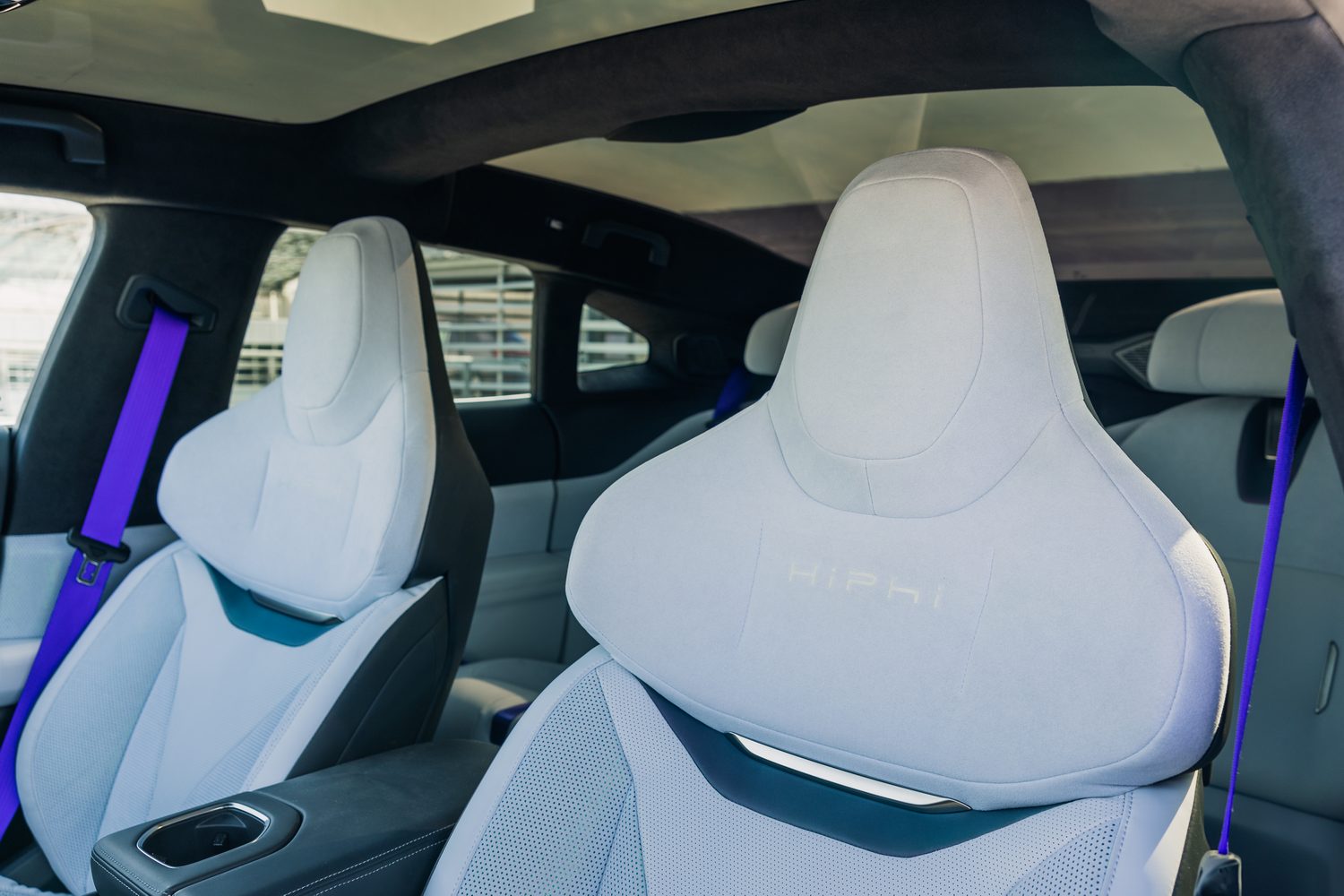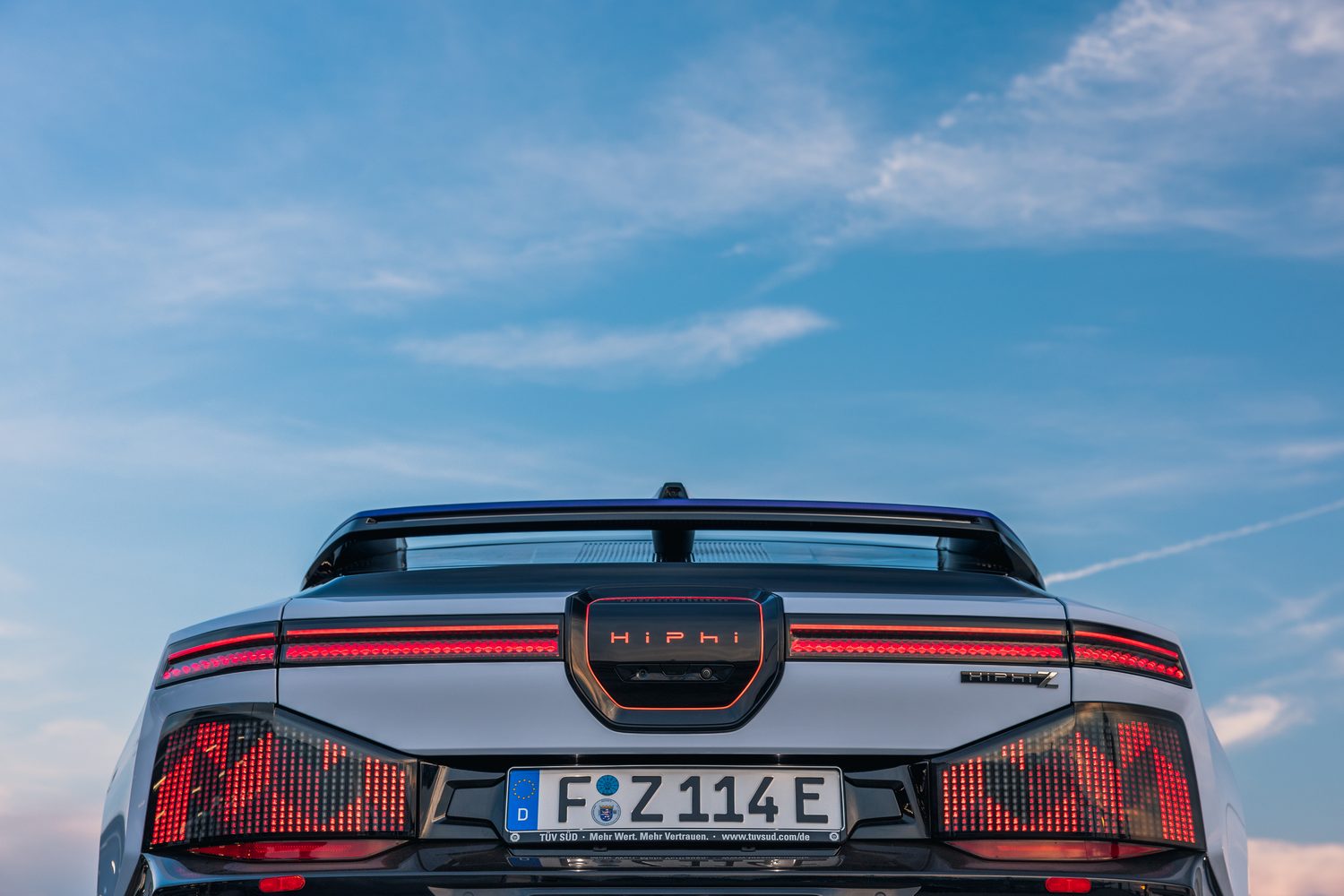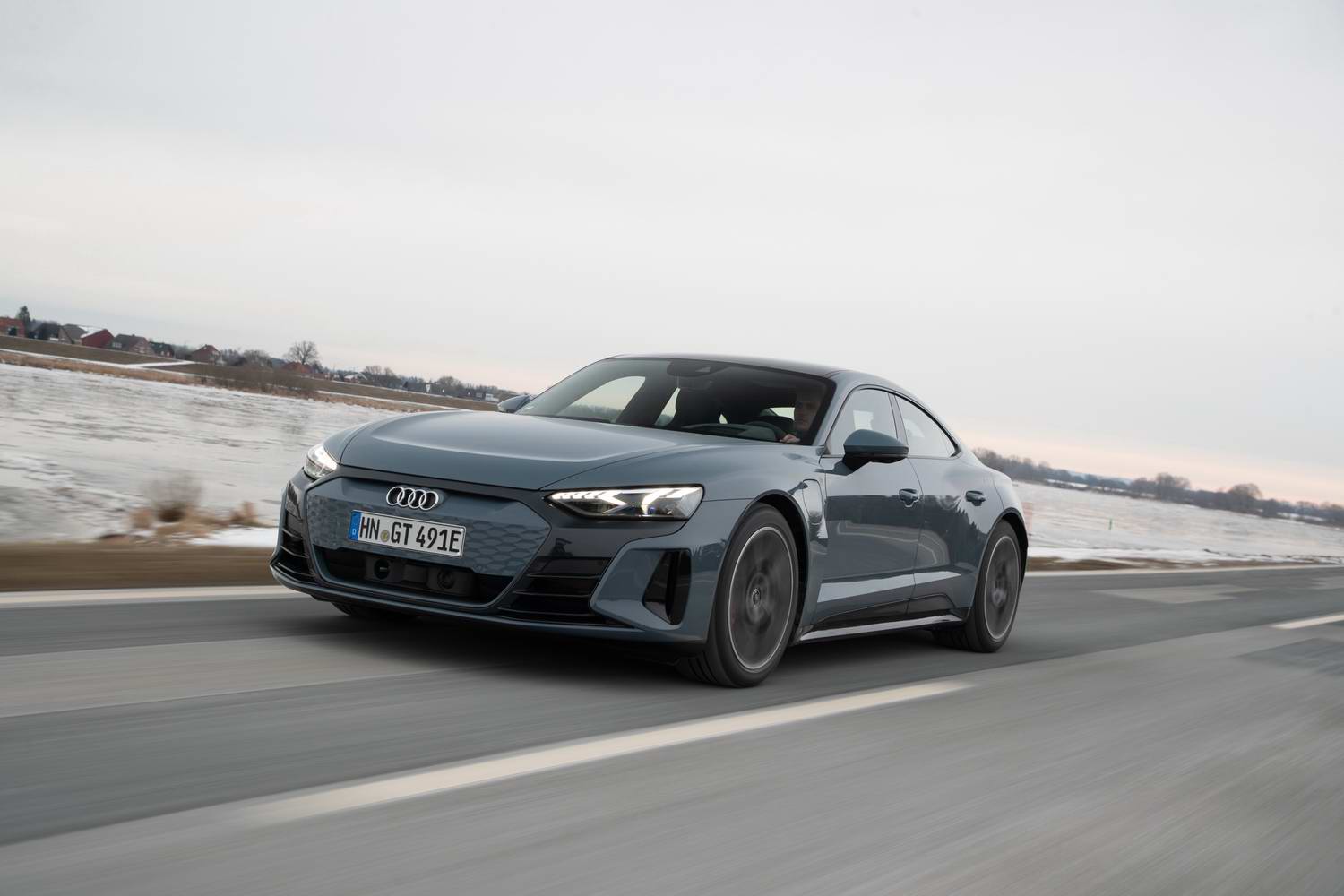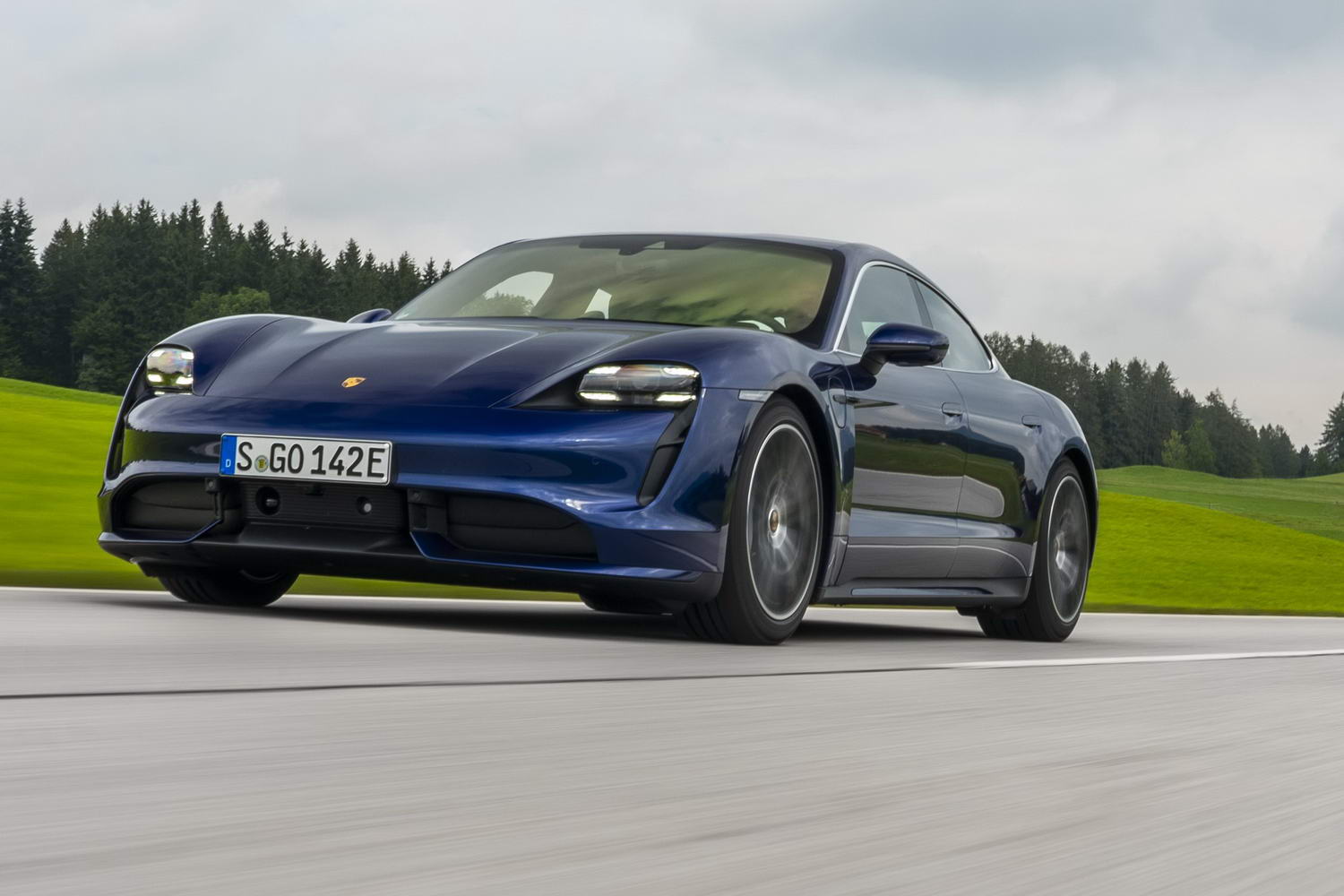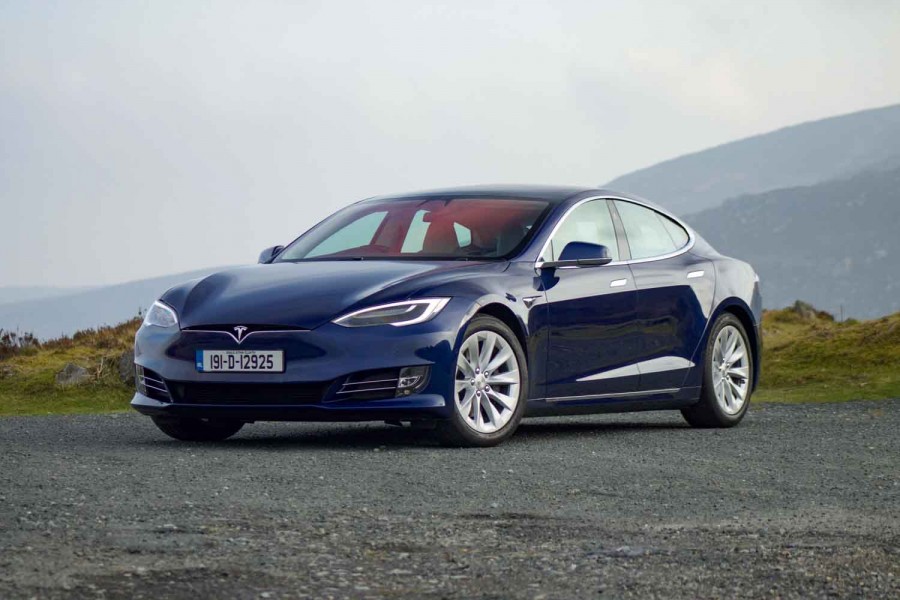The dominance of Chinese brands in the European new car market has long been prophesied, but it feels as though the switch to electric power is helping far-eastern manufacturers to finally make real progress in the west. Chinese-owned MG is doing remarkably well, and let's not forget who owns Volvo. But there's more to it than simply buying up legacy brands. There's an influx of 'new' manufacturers, and among the latest to join in the fun is HiPhi (pronounced like your home stereo system). A new company by any measure, the firm is already among the top premium electric car brands in China, outselling Porsche and Tesla of late, and now it's trying to emulate that success in Europe.
HiPhi's assault on the European electric car market is two-pronged, with the Tesla-rivalling X SUV joined by a fast four-door called the Z - as tested here. A smaller SUV called the Y will join later, but two is company for now. And they're already available in two European markets: Norway and Germany. By the end of 2025, HiPhi plans to launch in at least 12 European markets, although whether Ireland will be among them remains to be seen. But do we want the Z to grace Irish roads?
In the metal
HiPhi freely admits it isn't targeting traditional premium car customers, which is why the Z (the marketers pronounce it 'zee', but we all know it's 'zed') is styled in such a distinctive way. Some will love it and some will hate it, but whether you like it or not, it certainly draws attention. For us, it's a bit too much - the mash-up of colours and panels and lights is all a bit of a mess - but it stands out, and that's the name of the game for a nascent new car brand.
Yet even when you look at the car's exterior, there are traces of the tech-heavy approach HiPhi is taking. The headlights are projectors in the traditional sense of the word - so much so that it's possible to park and use them to project a video onto a wall. It'll be in black and white, but the company says there will eventually be a chance to do it in colour.
While that's very clever, it's only the beginning. The lights can also project things onto the road ahead, so they can warn you of oncoming hazards and they can even project a zebra crossing when you want to let a pedestrian cross. And the little patch of LEDs below the main headlights can be used to deliver messages, including a little U-turn signal when appropriate, or just a thumbs-up. The latter can only be used when the car is stopped, though.
What's more, there's an active grille that's incorporated into the design, feeding cooling air to the running gear when necessary and shutting to improve aerodynamics when the cooling isn't needed. And that little lump on the roof that makes it look a bit like a taxi? That's the 'lidar' (Light Detection and Ranging) system, which will eventually be used to allow this car to drive itself. In fact, it already drives itself off the production line, with no need for a member of staff to move it away.
Then there are the stripes down the sides of the car. They aren't there to make the car look faster, but to provide more messaging functions. The lights in the strips can welcome you or leave messages for other people, all of which can be customised and programmed by the driver.
But while the tech is quite clever, it isn't the only feature of note. The Z is fitted with improbable 22-inch alloy wheels, and though the sidewalls are chunkier than you might expect, HiPhi is still worried about damage. Which is why the wheels are covered with a rubberised plastic hub cap, which is cheap to replace if it gets scraped. It's a clever-yet-simple idea that puts us in mind of the old Citroen C4 Cactus, with its protective bubble-wrap down the sides. Of course, if you'd rather go without the protective wrapping, you can just have conventional alloys.
The HiPhi's exterior, therefore, is remarkable in lots of ways, but the interior is arguably even more impressive. First of all, the colour scheme in our test car matched that of the exterior, with pale leather and purple touches all over the shop. Then the seats, which are enormously comfortable, have similar sculpting to the racing buckets offered on BMW's M cars, but they have much more padding, and so sitting there for hours on end is no problem at all. The driving position is good, too, although you have to get used to wheel and mirror adjustment being controlled through a combination of touchscreen commands and the arrows on the steering wheel.
Speaking of the touchscreen, even that is adjustable, thanks to a robotic arm behind the floating display. If the driver uses the voice control, the screen will automatically turn and face them, while the same also goes for the passenger. With its movements, HiPhi claims the screen will interact with occupants, although we couldn't really evaluate this on our Chinese-spec test car because our Mandarin is not, perhaps, what it might be.
Nevertheless, we could test the screen, which proved smart, intuitive and largely responsive. A few moments of lag raised questions, but generally it was smooth and easy enough to use, even if certain features hadn't been calibrated for the European market. The cameras worked brilliantly and most of the safety systems worked well, although there were a few random beeps and warnings as the car, which was naturally set up for Chinese roads, struggled with German infrastructure. At one point, it decided a bollard was a person. Such issues should, however, be ironed out before the first cars are delivered.
And any issues will continue to be ironed out as time goes on, because of the Z's clever architecture. With any number of sensors and cameras on board, the car is constantly monitoring its own condition, and because the electric powertrain is effectively quite simple, it's expected that most problems will be caused by the computers, rather than the mechanical bits. That means HiPHi will fix them by updating the car remotely and at lightning pace. In fact, the company says many customers won't even be aware preventative updates have been installed.
Naturally, though, all that requires data harvesting, and some buyers might be concerned that a Chinese company is collecting all that data and then using it to install updates without telling customers. However, HiPhi's British chief technical officer assures us all the data is anonymised, and though the Chinese government has a small stake in the company, HiPhi's parent company is still privately owned.
One thing HiPhi won't be able to fix remotely, though, is the car's cabin trim. Not that it should have to do too much of that, because build quality is pretty solid. Admittedly, nobody at Audi is going to have sleepless nights, but the Z's cabin is every bit as good as that of a high-end Volkswagen, if not better. Whether it's worth the €100,000 asking price, however, is open for debate.
Either way, there's no arguing with the amount of space on board. Taller rear passengers will naturally find the headroom limiting in the back, but it's better than that of a Porsche Taycan, and legroom is immense. Combine that with individually adjustable rear seats and you're left with a car that's remarkably pleasant to be driven in.
Boot space, however, is less impressive. A 316-litre luggage bay with all four (or five) seats in place leaves it almost 100 litres down on the Porsche Taycan and lagging well behind even the Volkswagen Golf. The BYD Dolphin has a bigger boot. And when you fold the back seats of the Z down, you don't gain all that much. Four-seat models get a maximum of 654 litres of boot space, while the five-seaters increase that to more than 680 litres, but it's still nothing on a Skoda Superb.
Driving it
Technology clearly dominates the HiPhi driving experience, and the brand freely admits it aims to offer a futuristic proposition, while still providing a car that's conventionally enjoyable to drive. To a considerable extent, the Z nails this brief, with an appealing balance of comfort and performance to go alongside its high-tech interior.
Let's start with the power. HiPhi is offering customers just one powertrain: a twin-motor, all-wheel-drive, high-performance system that's fed by a 120kWh battery pack. That means the car will cover up to 555km on the official efficiency test, but charging the batteries is a bit of a grey area at present. HiPhi currently only publishes figures for AC charging (recharging the battery takes 12.4 hours at 11kW), and our Chinese-specification test car didn't even have a CCS charging port. Rapid DC charging, however, is expected to be available when cars arrive in Europe. Not that we expect many customers to use it very often. Our test drive suggested the HiPhi should be able to achieve its official range in the real world, with our car getting reasonably close to that range on a mixture of roads, despite some 'spirited' driving (all solely to test HiPhi's performance claims, of course...).
Speaking of which, the Z is spectacularly fast. Together, the two 336hp motors produce a total of 655hp (don't ask why the maths works that way), so the fact sheet claims the sprint from 0-100km/h is done in 3.8 seconds, and we can well believe it. The acceleration is more than sufficient to push you back into the sporty, sculpted seats, but it's refined with it. Although it's forceful, it doesn't feel savage.
Perhaps that's because the Michelin Pilot Sport EV tyres have absolutely no problem whatsoever clinging onto the asphalt. Admittedly, our first taste of the Z was in bone-dry summer conditions, but there wasn't any hint of twitchiness or savagery. The car just feels incredibly planted and stable, whether under acceleration or braking.
That translates into the handling, too, because grip is ample, body lean is limited and the handling is generally pretty good. Riding on air suspension as standard, the Z feels balanced and secure, if a little soft compared with a Porsche Taycan. That isn't necessarily a criticism - HiPhi admits comfort takes precedence over handling in the Z - but the car generally provides a good balance of the two. The only real catch is the steering, which feels light and numb even in the supposedly more driver-orientated sport mode.
Otherwise, the Z feels rather good on the road, despite its noticeable bulk and limited visibility. At high speeds, the ride is very commendable, with the HiPhi proving more supple than a Taycan on the motorway. It doesn't exactly glide over the bumps, but it soaks them up nicely. Around town, however, the story is less rosy. There, the car's weight becomes more noticeable, and the ride becomes more brittle as a result. It's far from intolerable, but it's much less impressive than the high-speed comfort.
And when it comes to the visibility issues, the tech once more rides into the equation. HiPhi has fitted a digital rear-view mirror that uses a camera on the rear end to clear up the view out of the back. It isn't perfect - it really messes with your sense of depth perception - but it's clear and surprisingly useful.
What you get for your money
HiPhi hasn't even confirmed it's heading to Ireland yet, much less announced prices, but we wouldn't be surprised if the company decided to expand its presence to these shores. HiPhi has already confirmed it will launch in the UK and other right-hand-drive markets, so there's a good chance. For now, though, the HiPhi Z is only available in Germany and Norway, with prices starting at just over €100,000. It isn't cheap, but HiPhi isn't aiming to undercut its rivals on price - it wants to compete on its own merit.
As a result, there are very few options or trim levels. The Z comes as it is, offering everything from the robotic touchscreen arm to the thumbs-up LEDs as standard. The biggest decision is whether you want five seats or four.
Summary
The HiPhi Z is a convincing first attempt from the company, and for customers for whom technology is everything, it's going to take quite some beating. But though it drives well, it isn't as good as vehicles from so-called 'legacy' brands, and if you're going to spend this kind of money, the Porsche Taycan remains our choice. That said, the Z is a viable and accomplished rival, and if HiPhi makes a few relatively minor over-the-air tweaks, the Chinese option could become an ever more appealing one.

